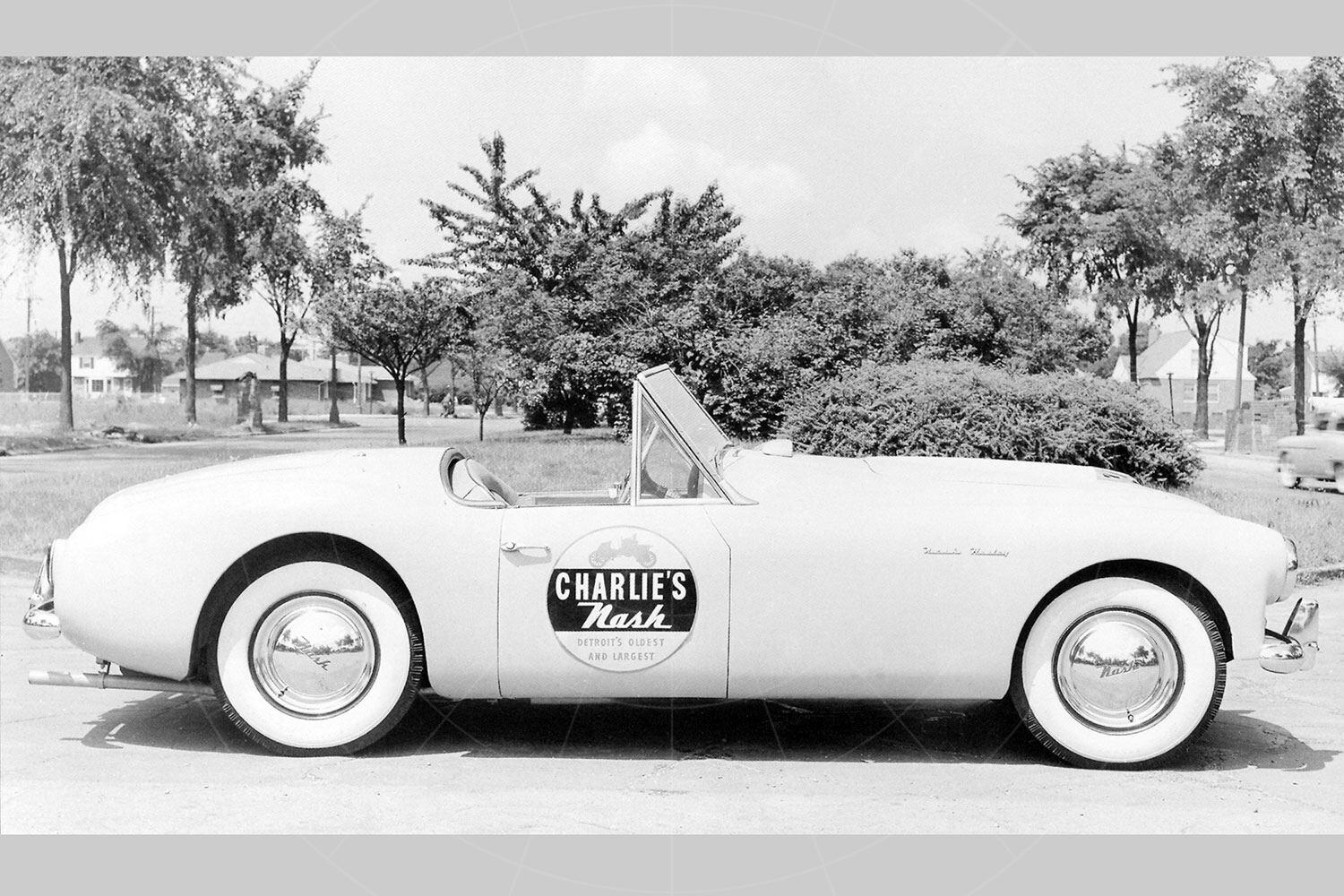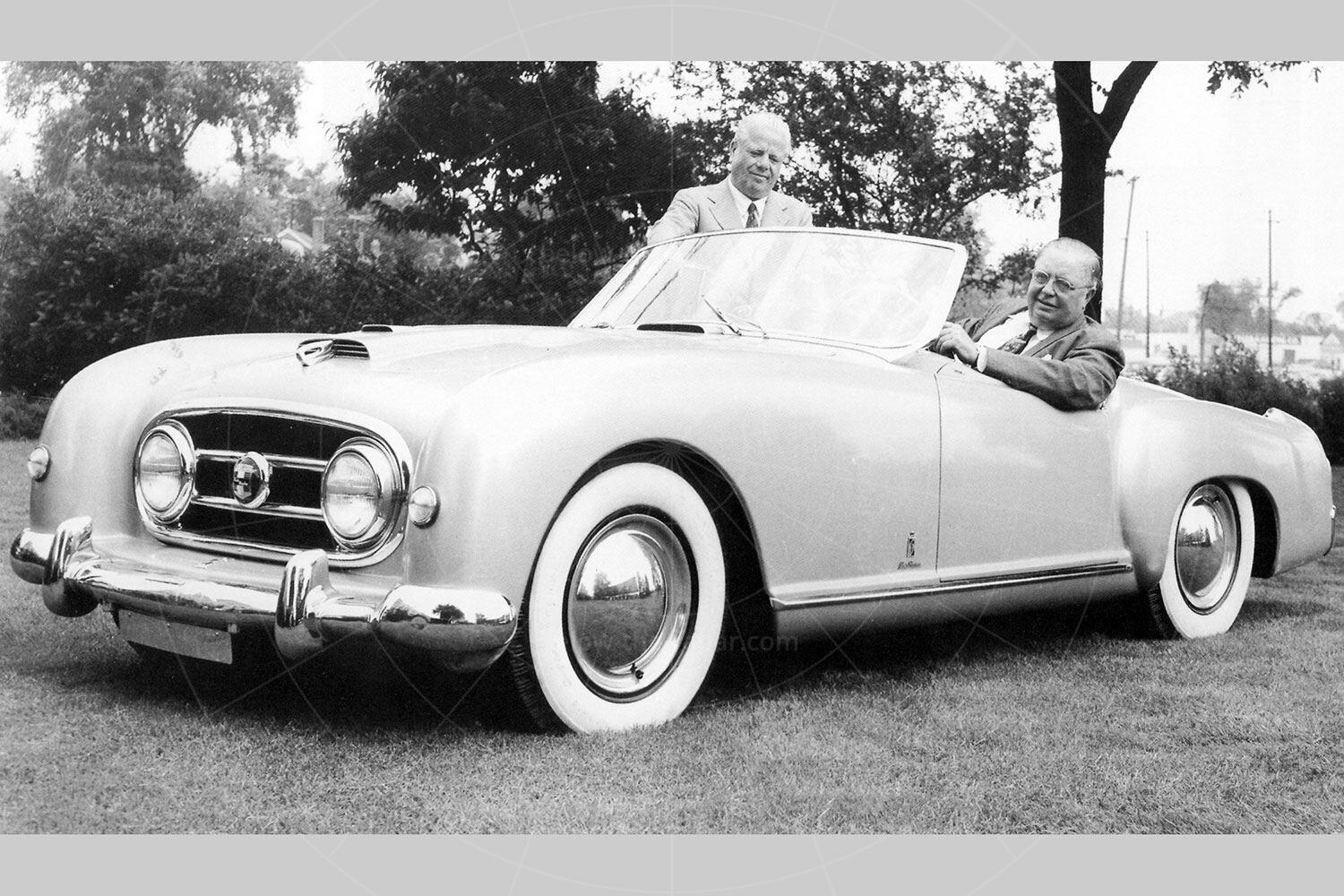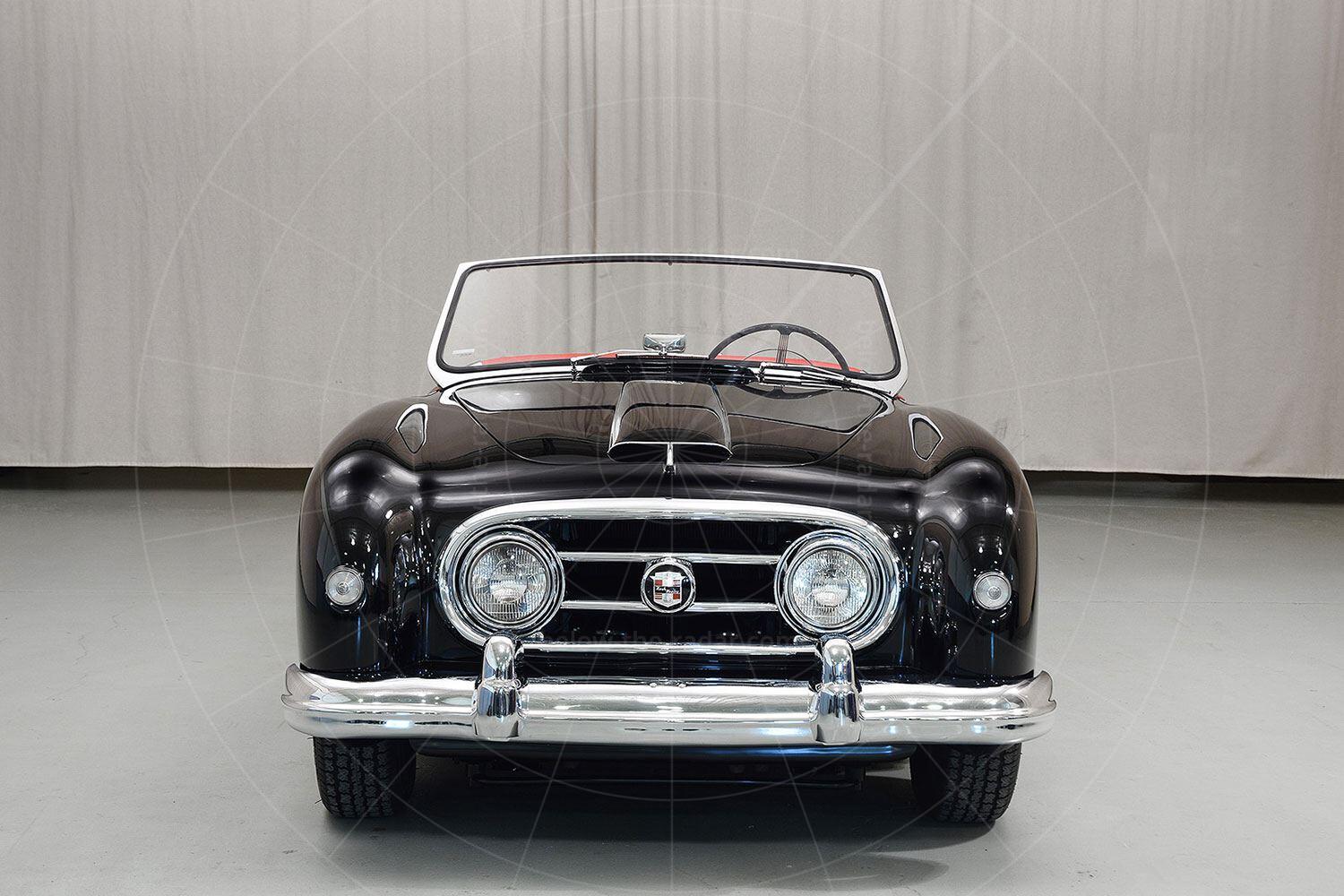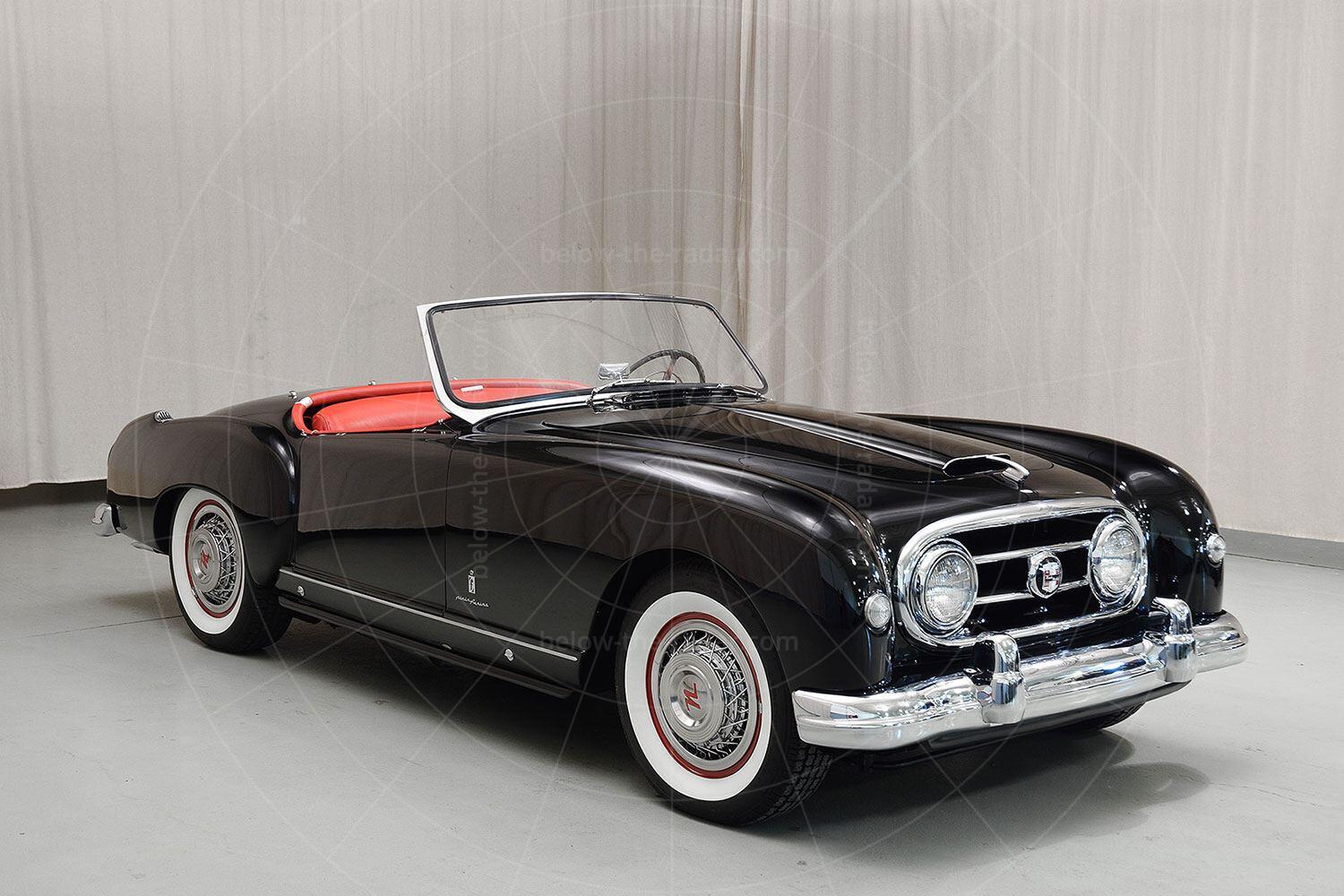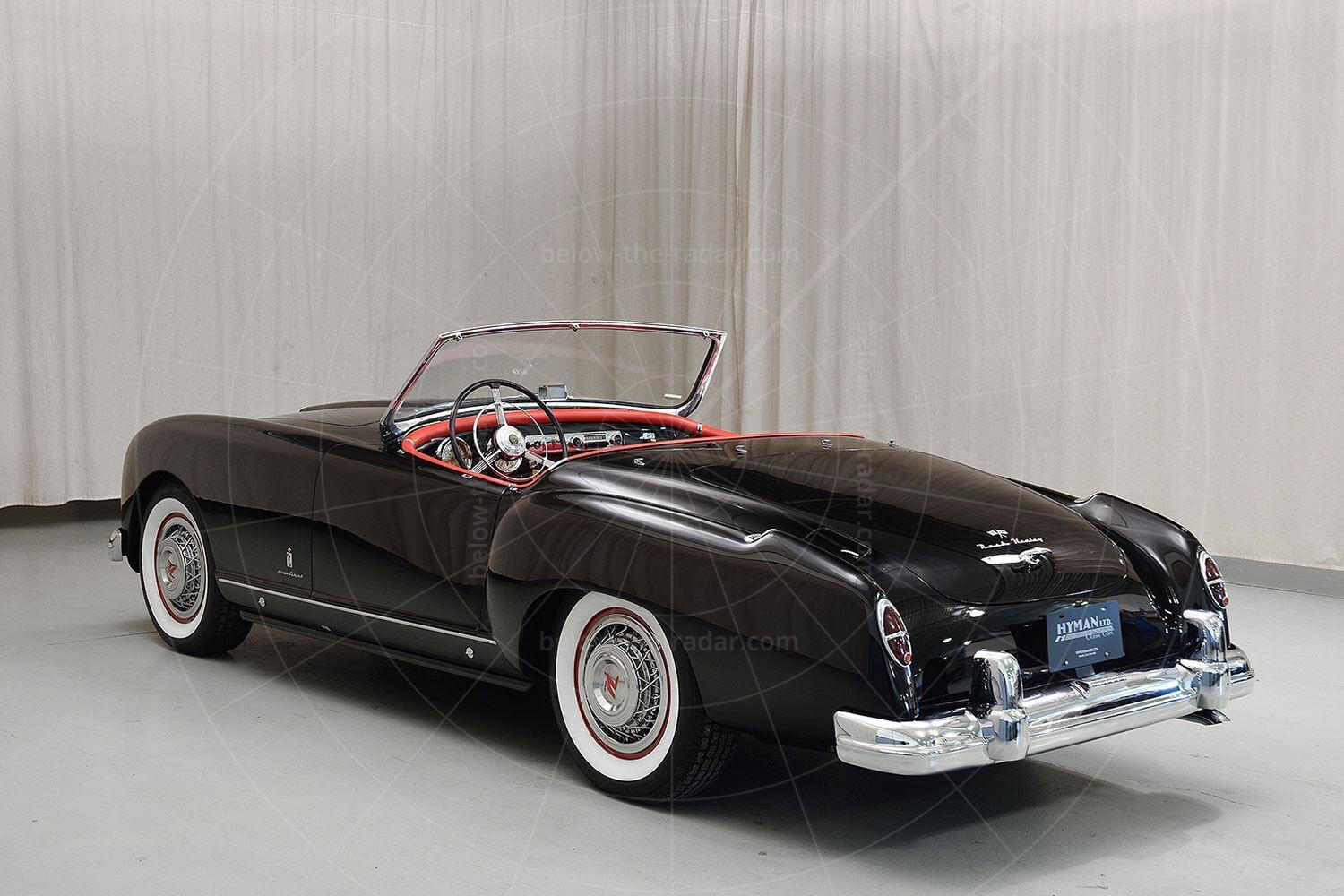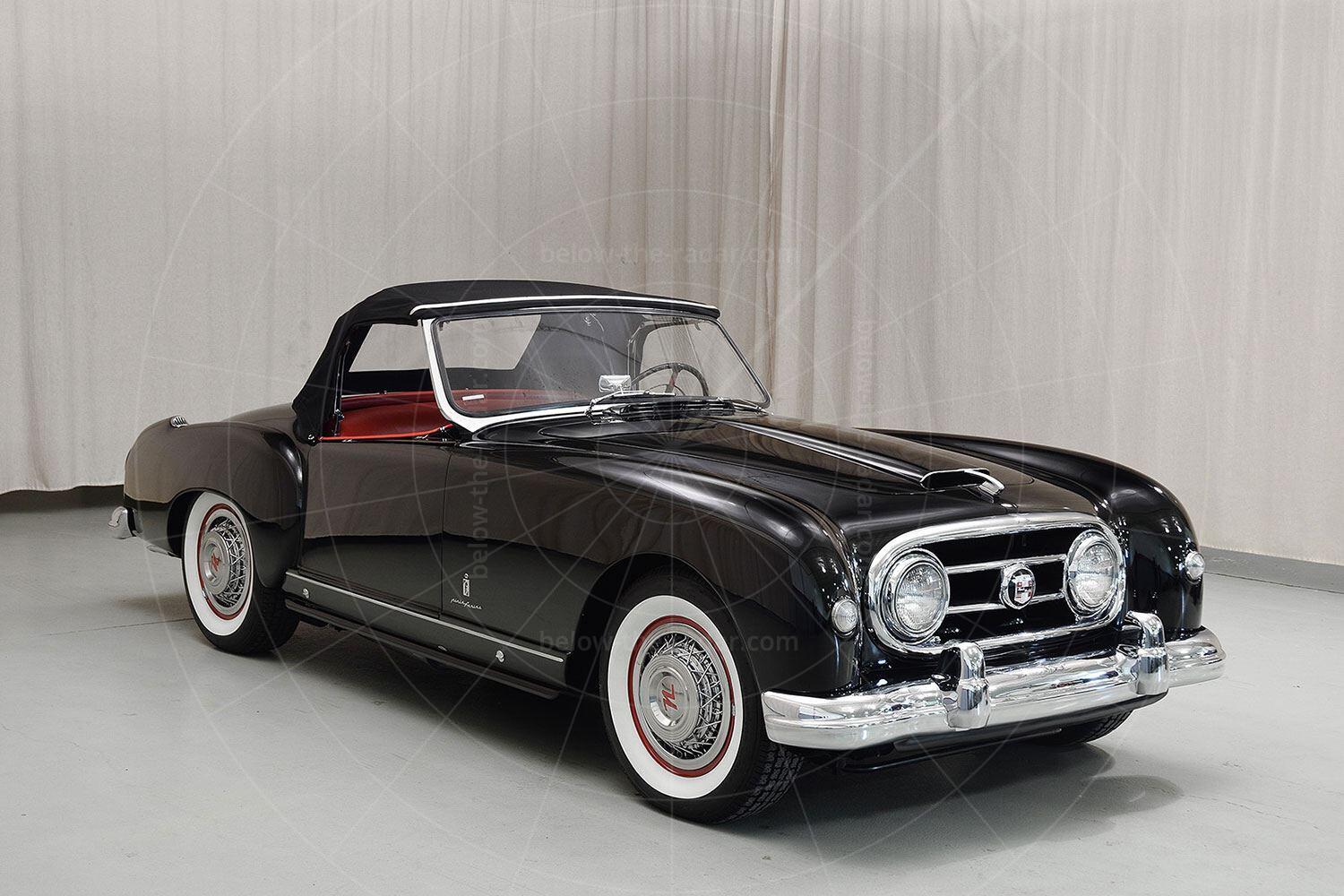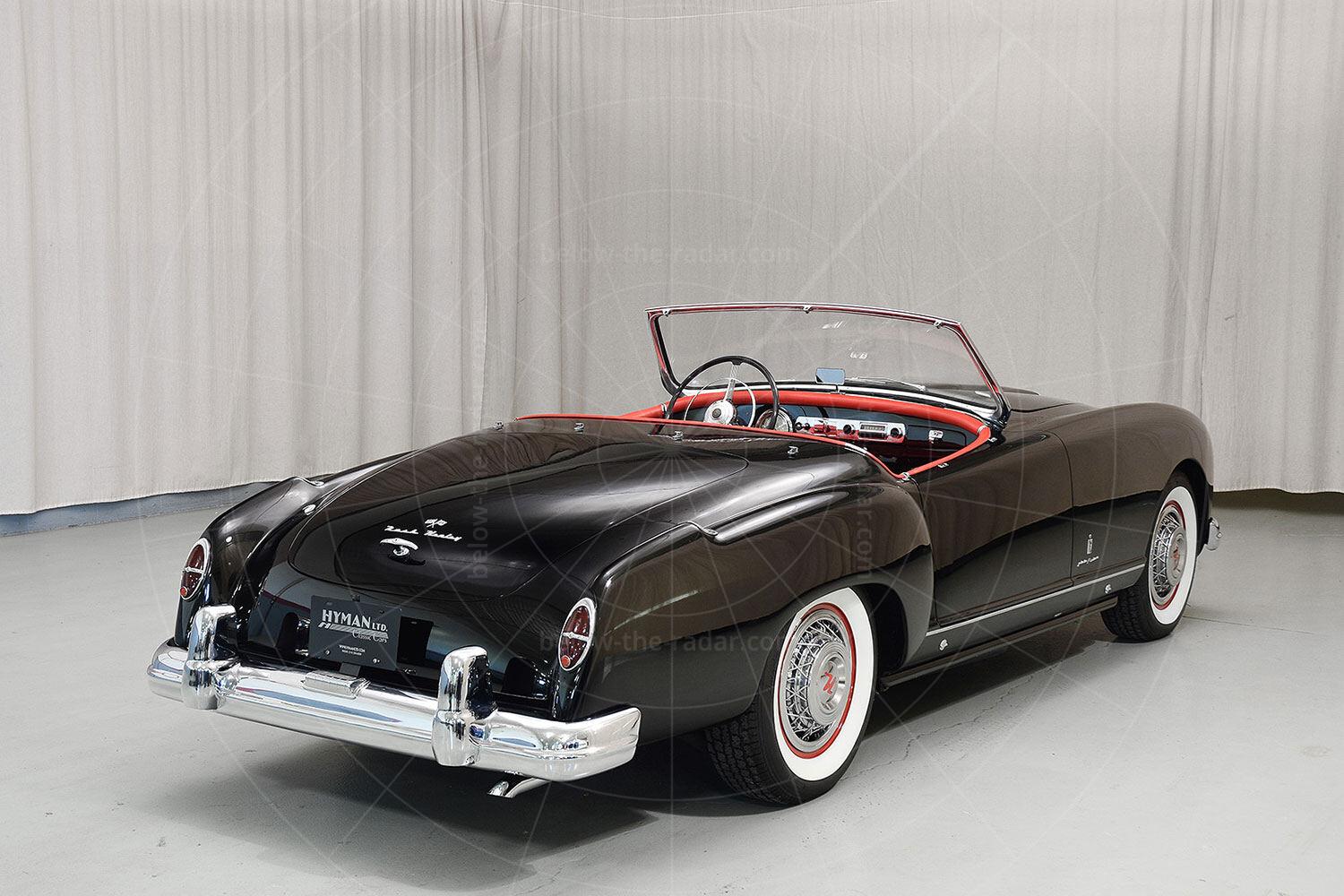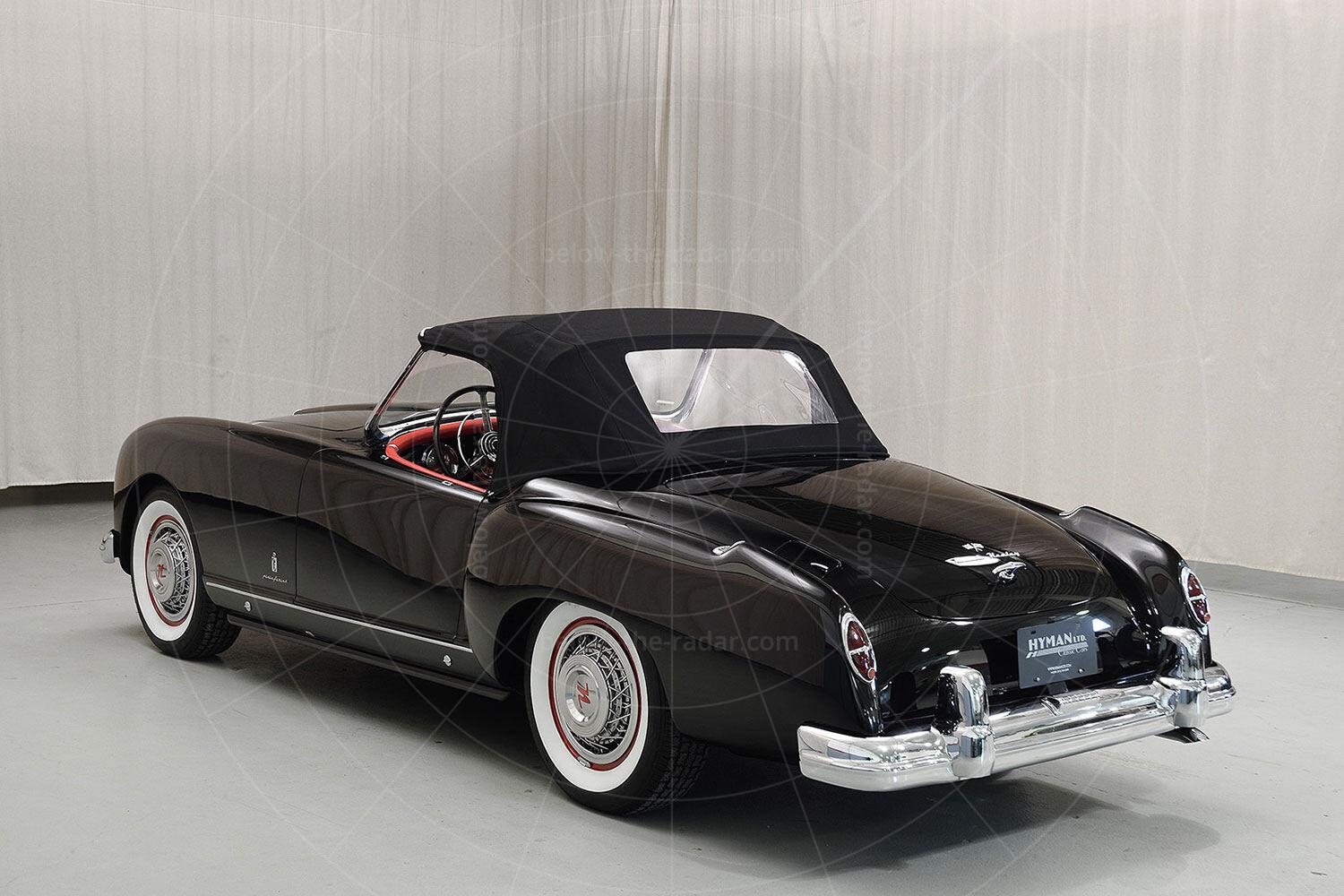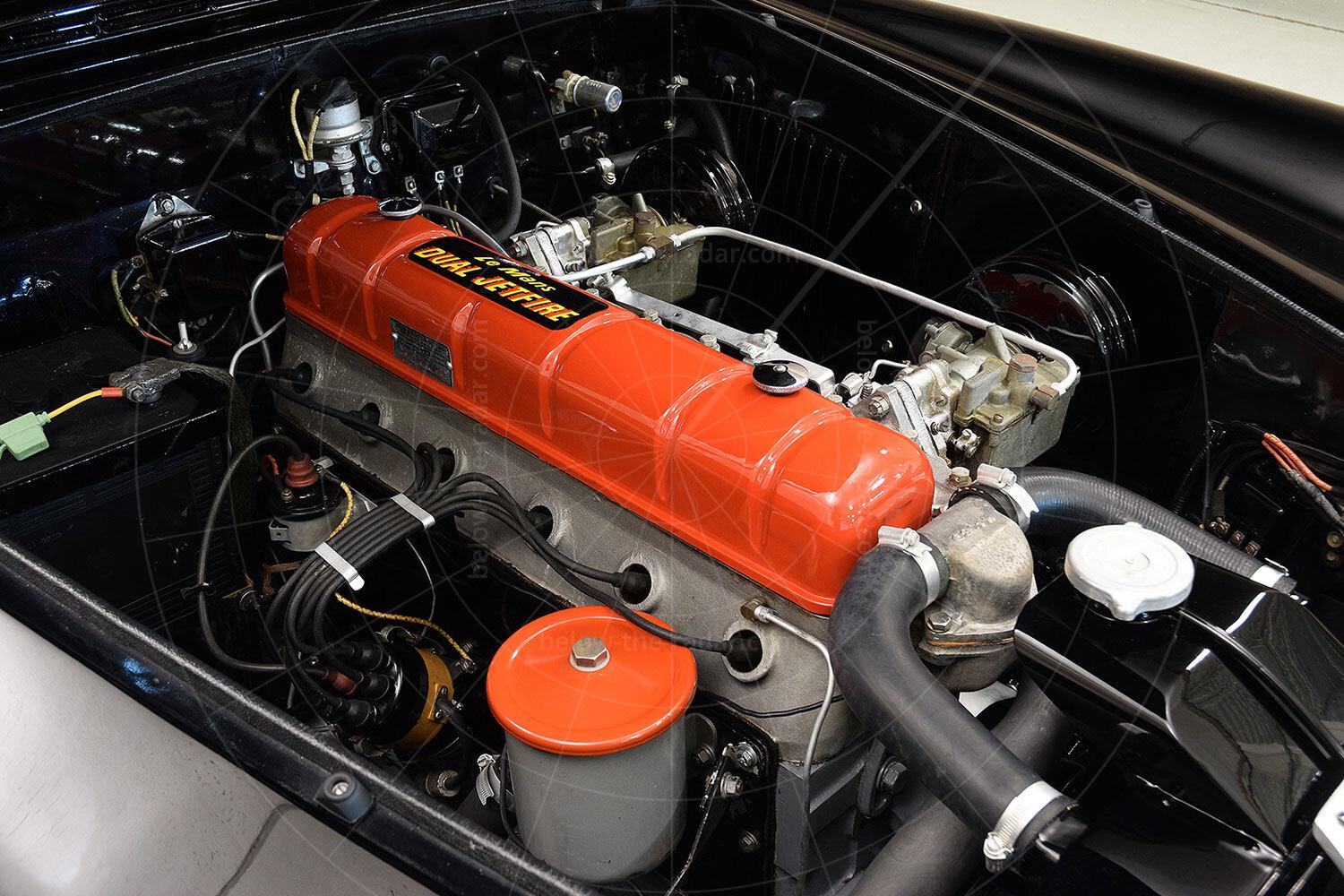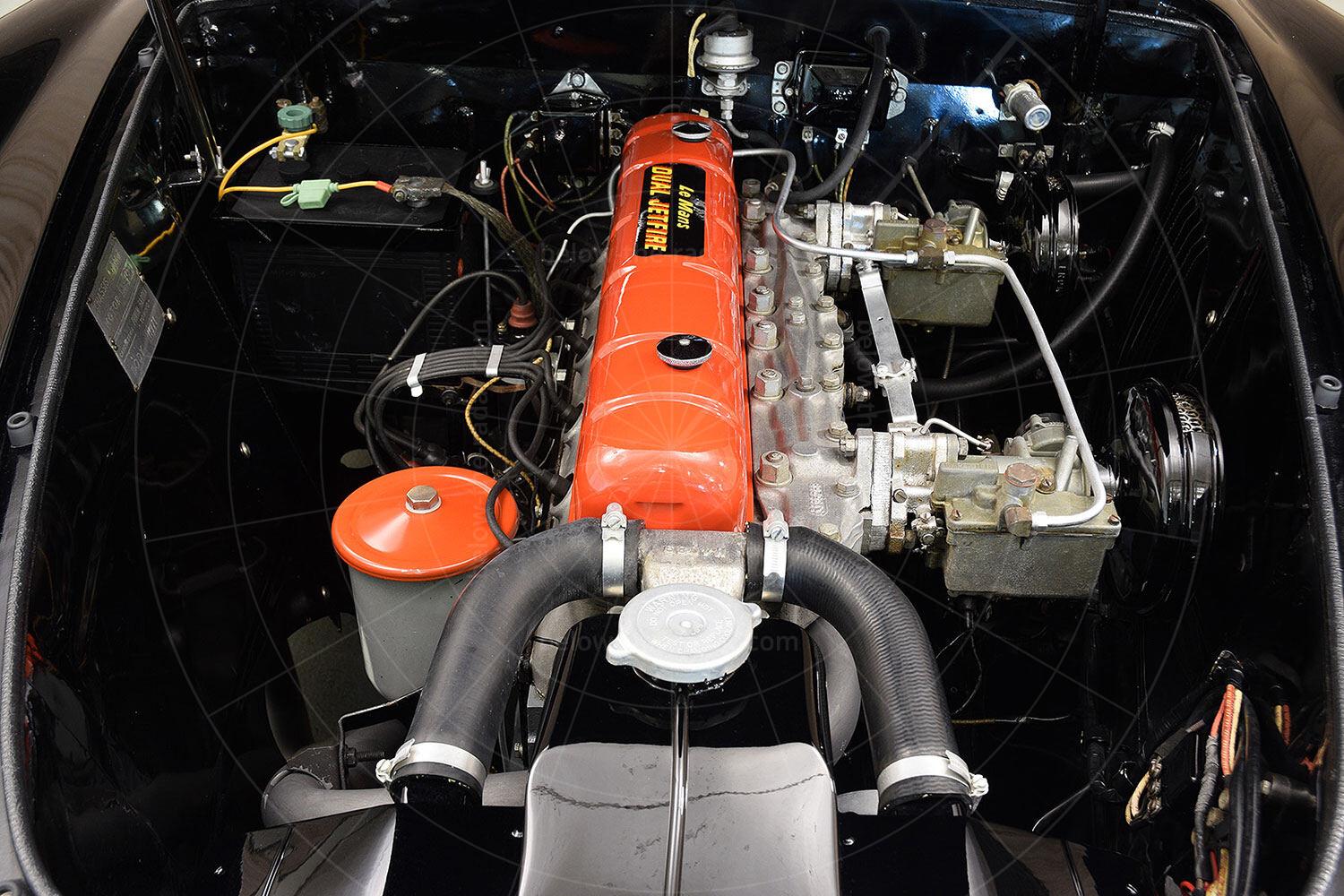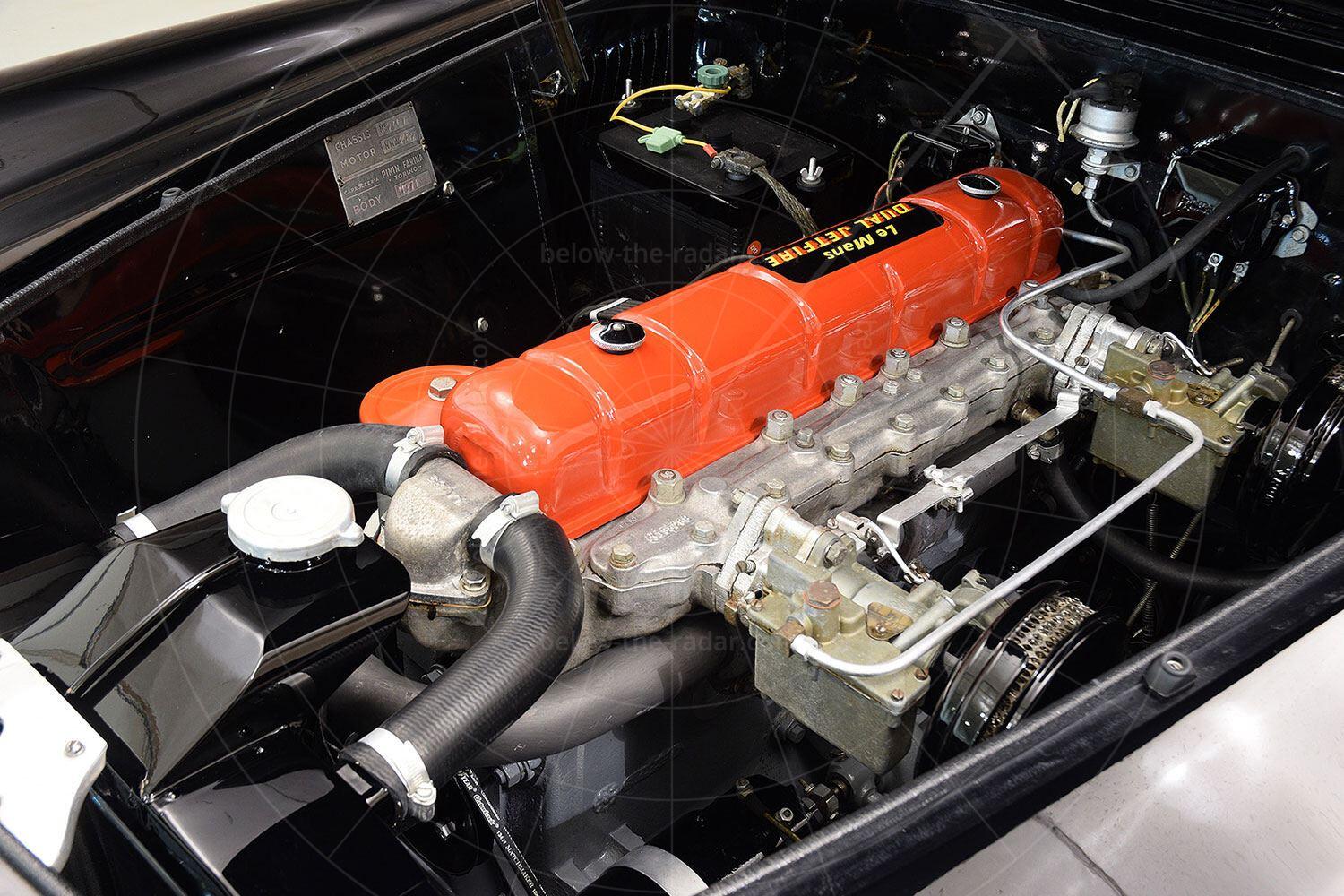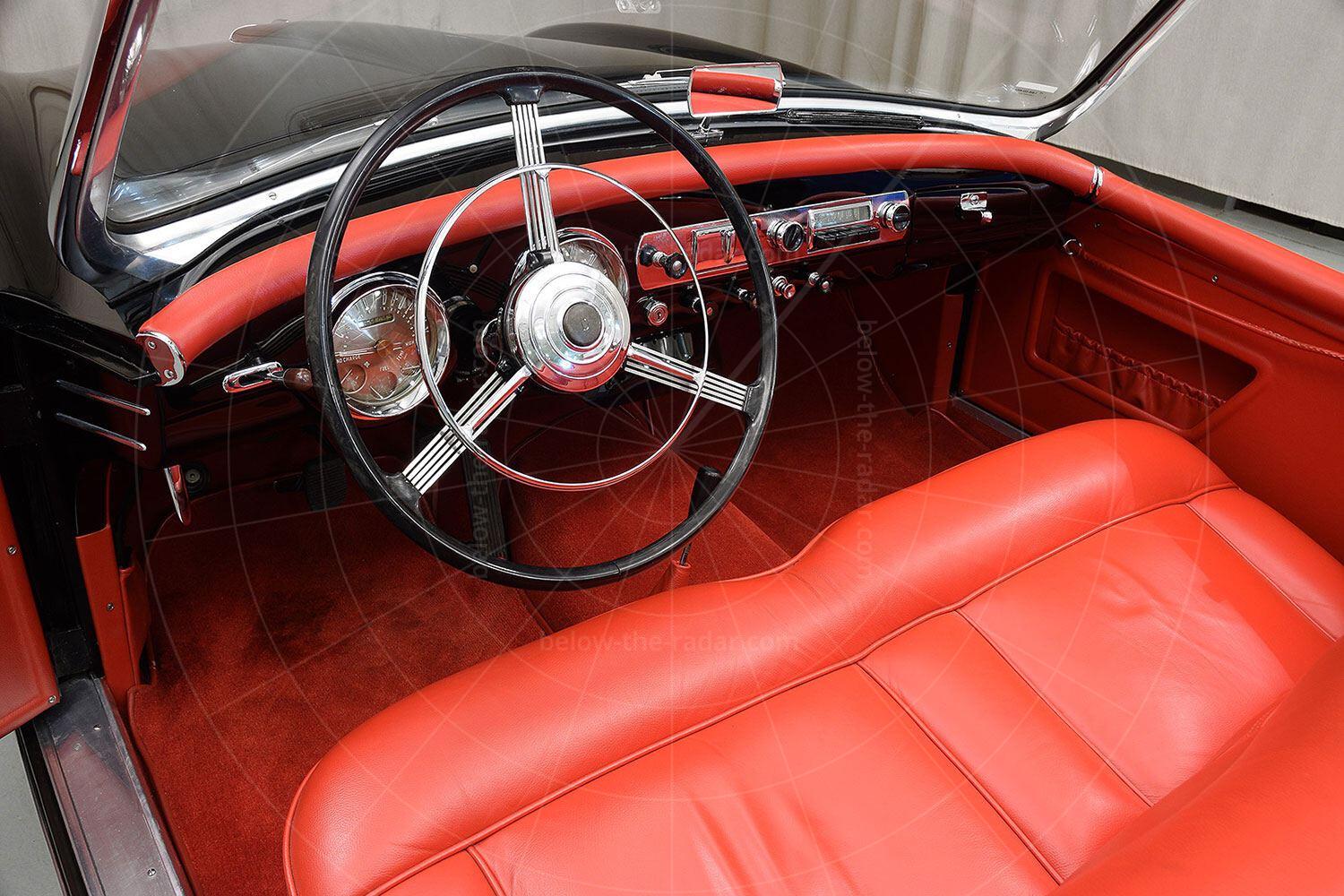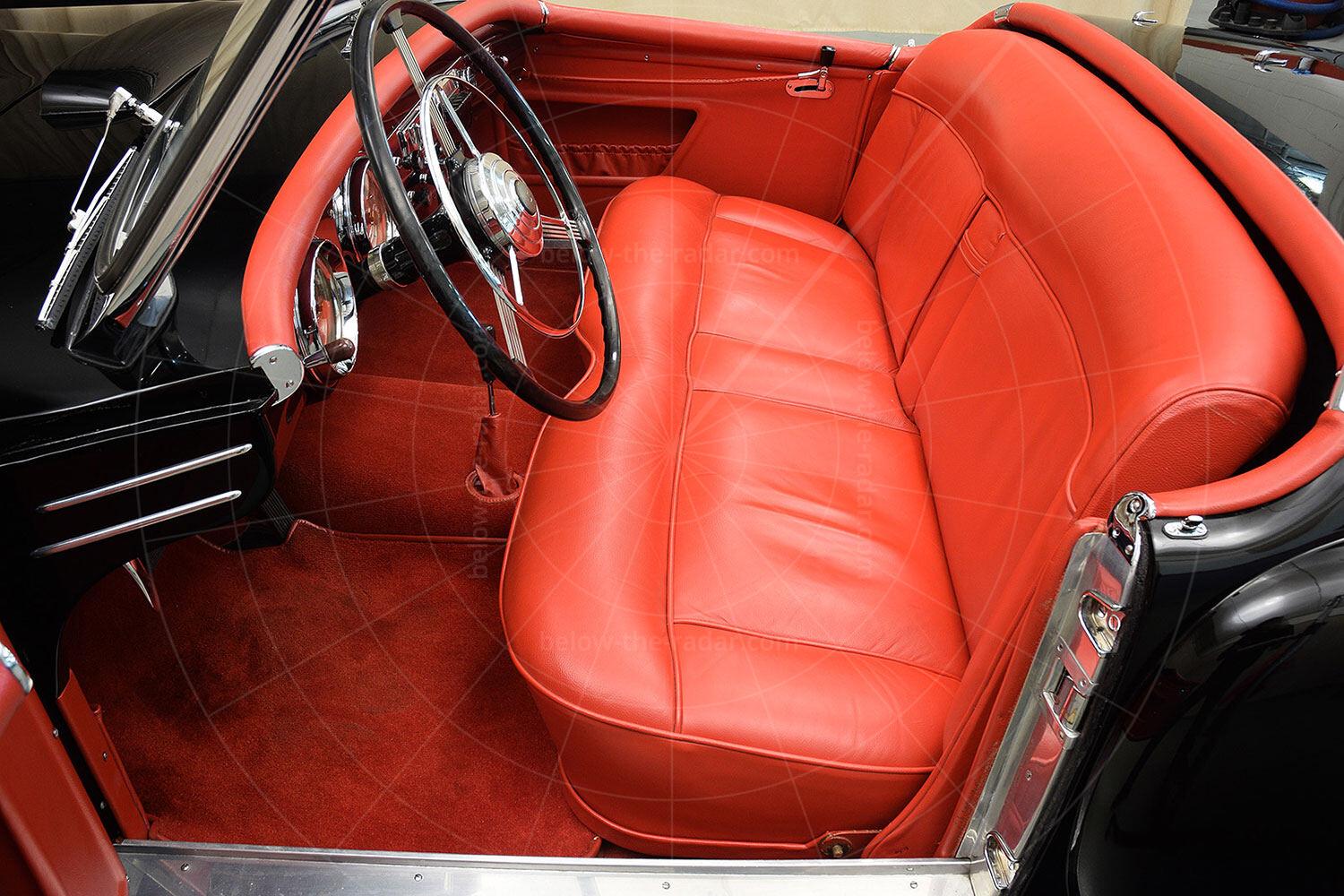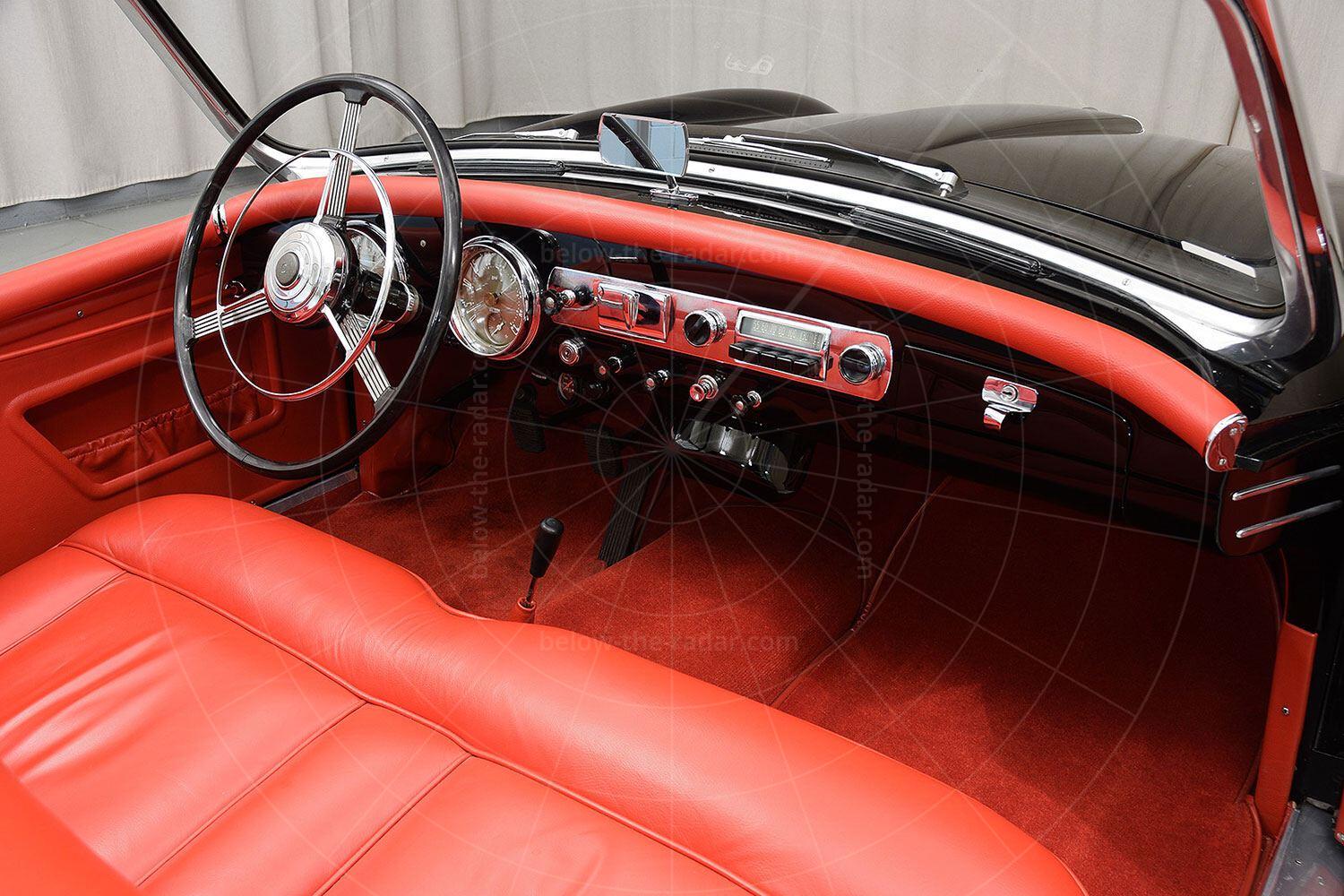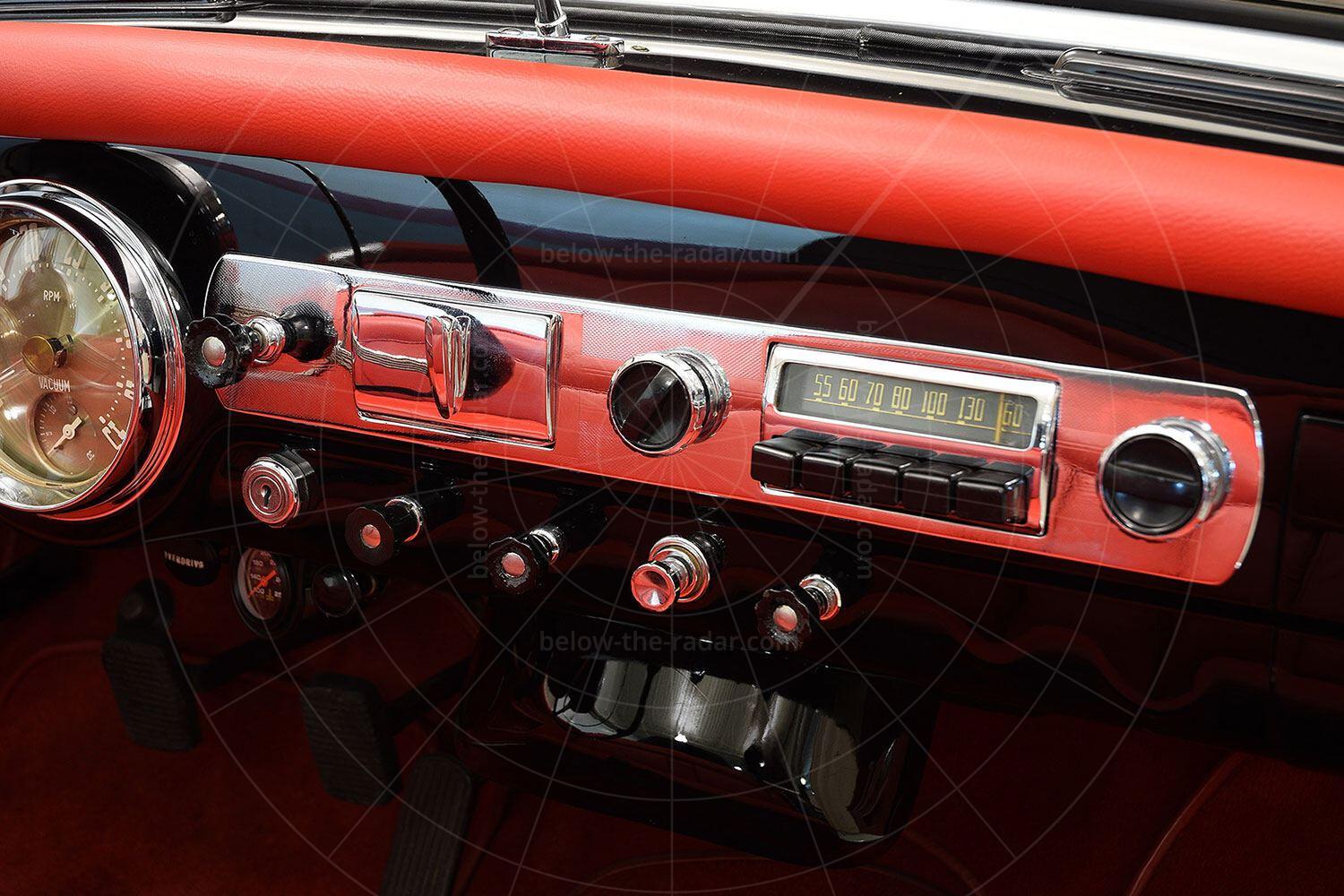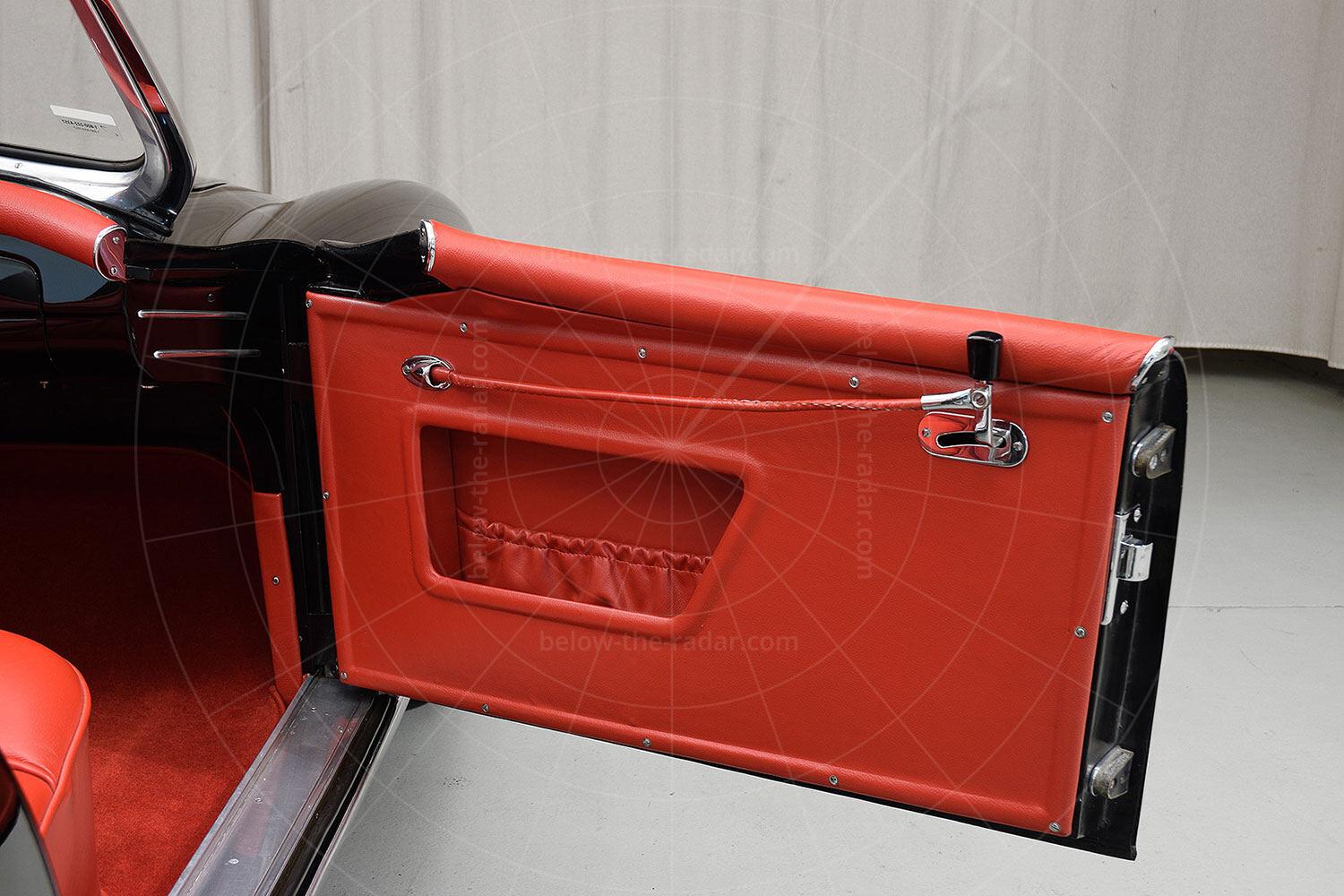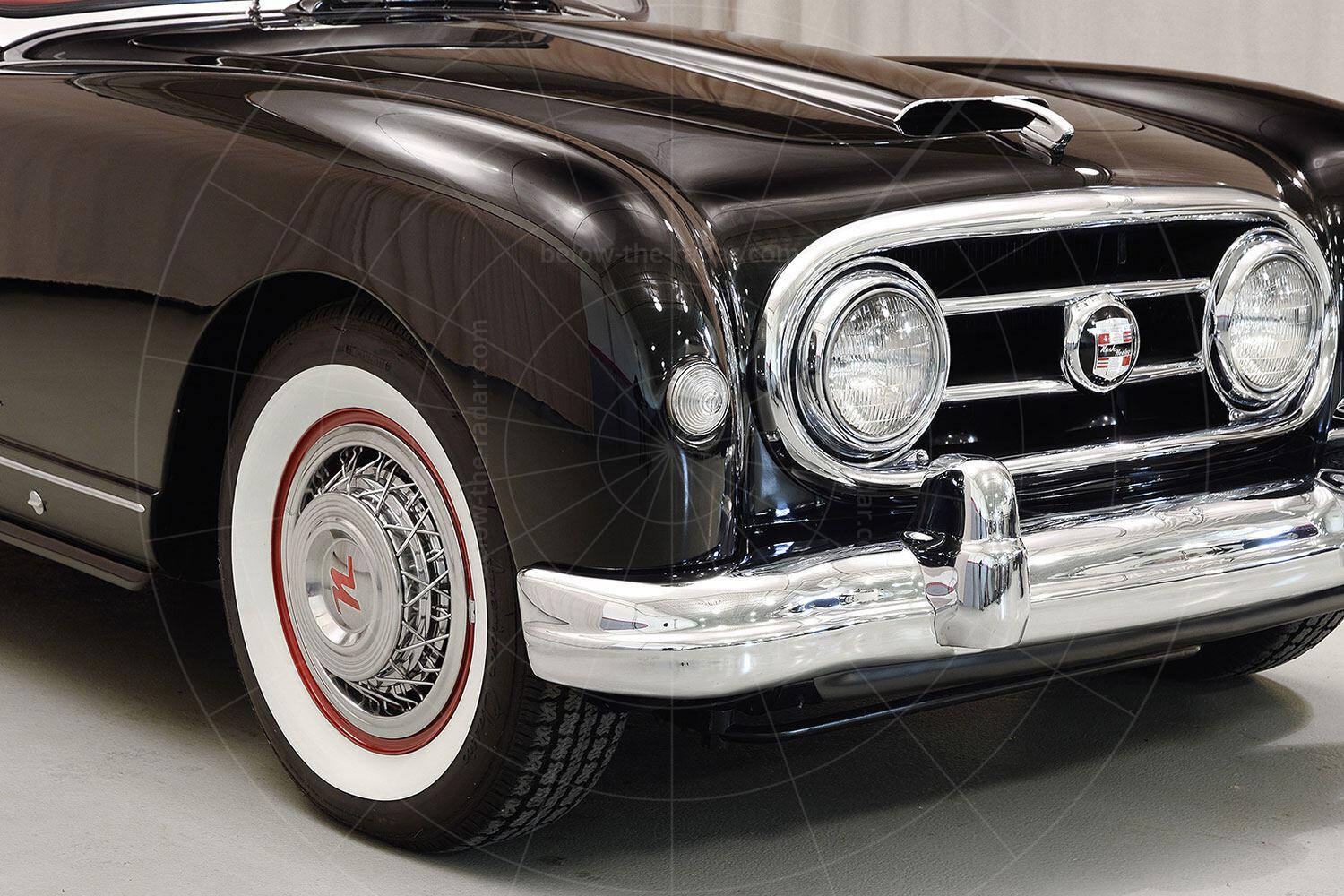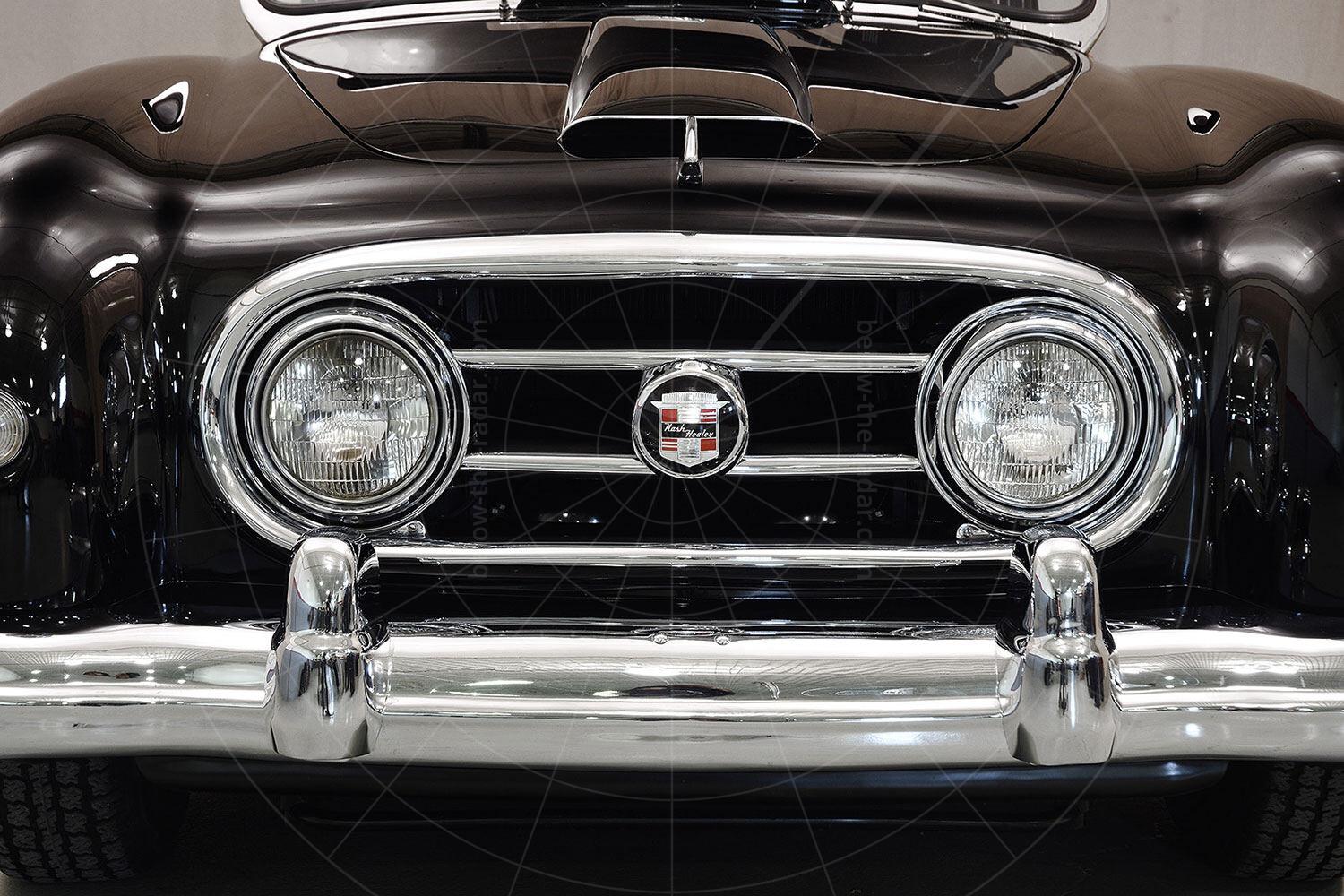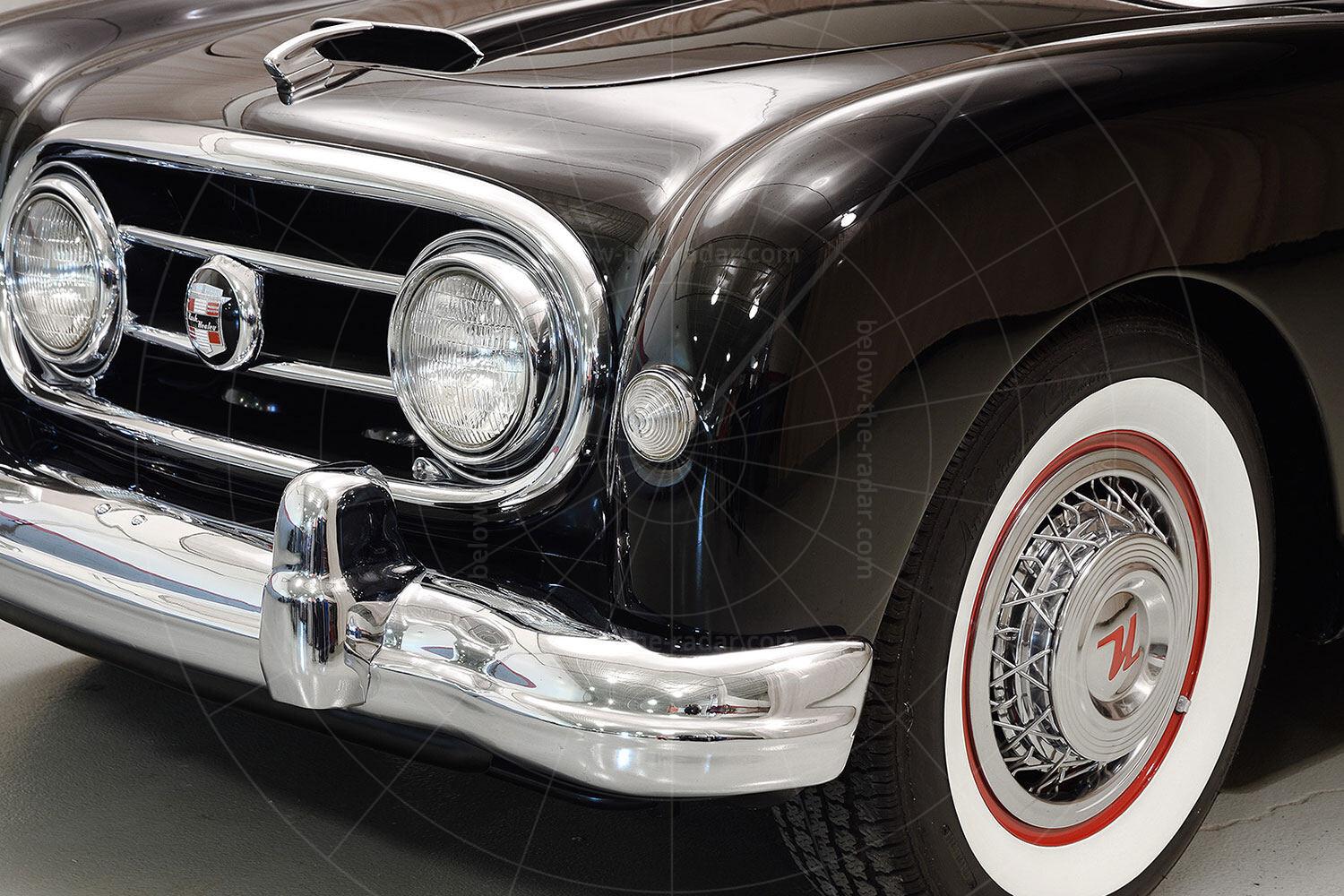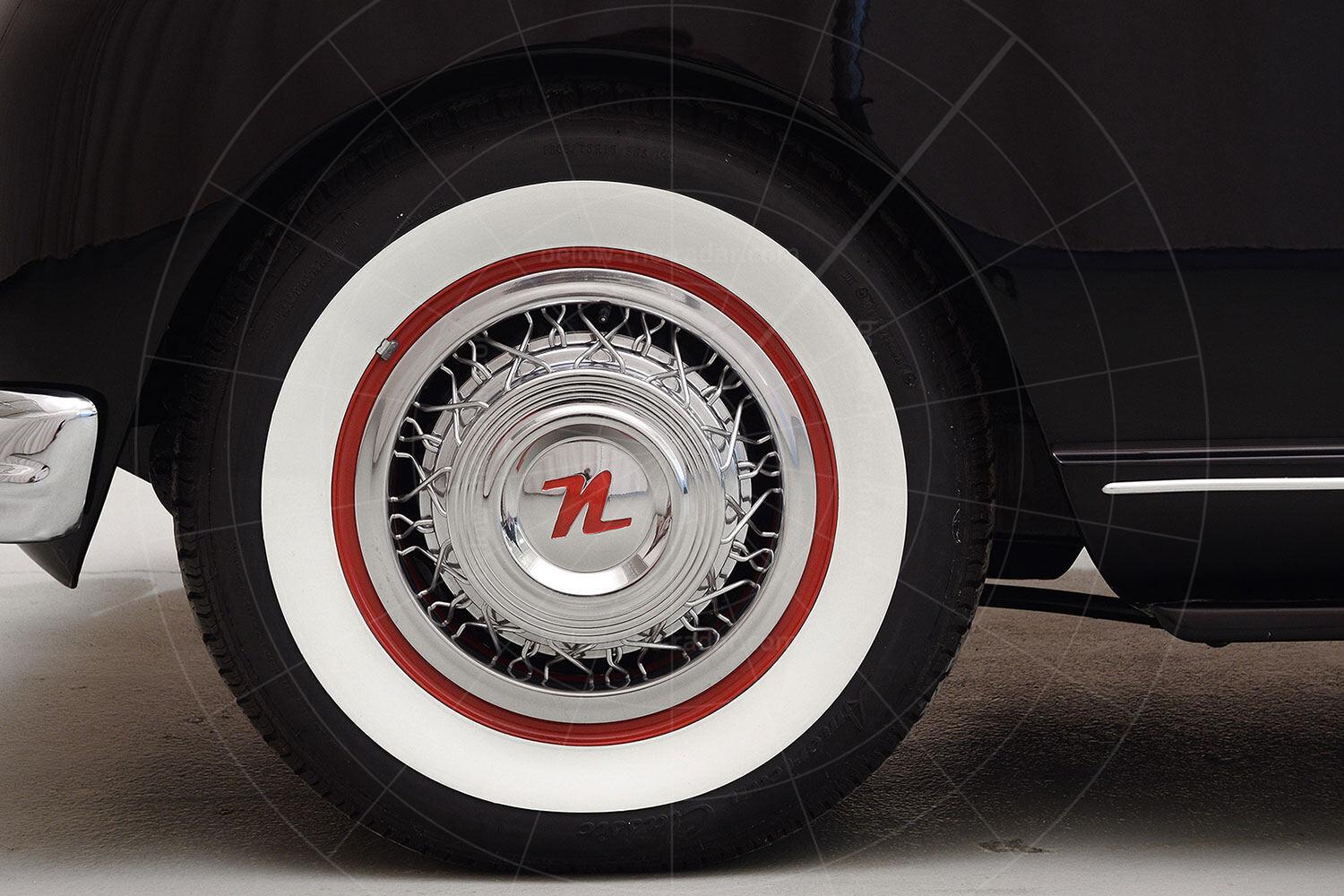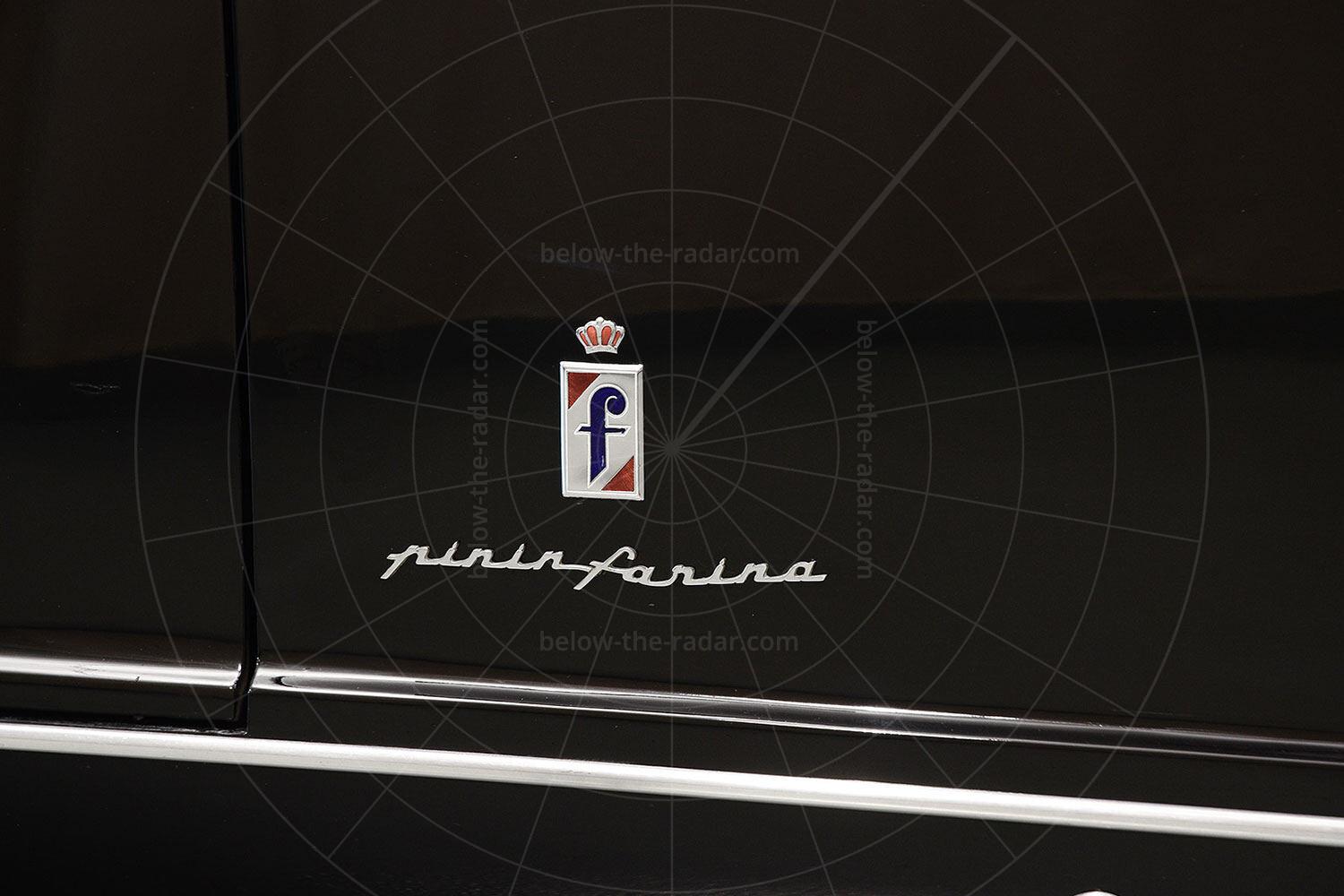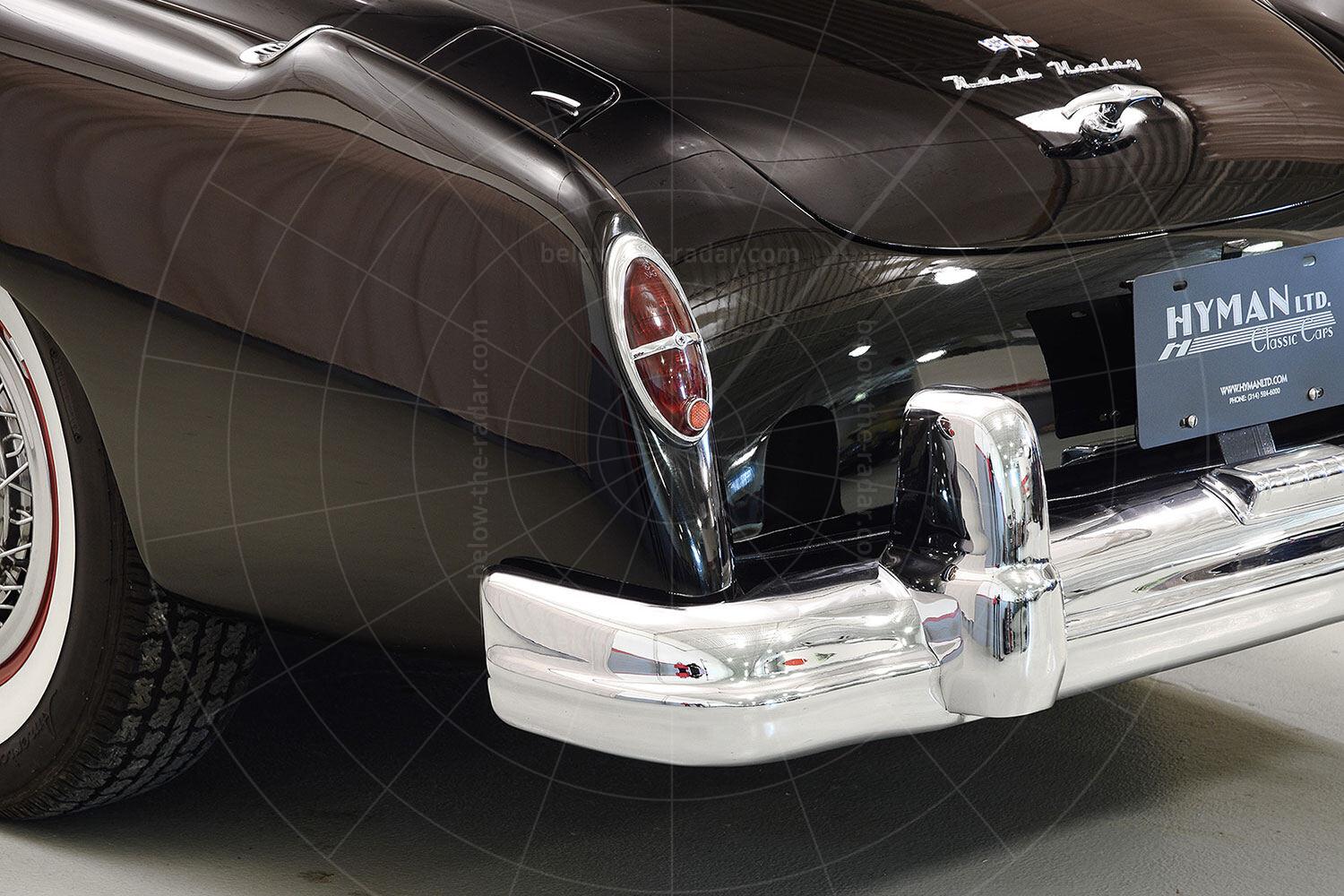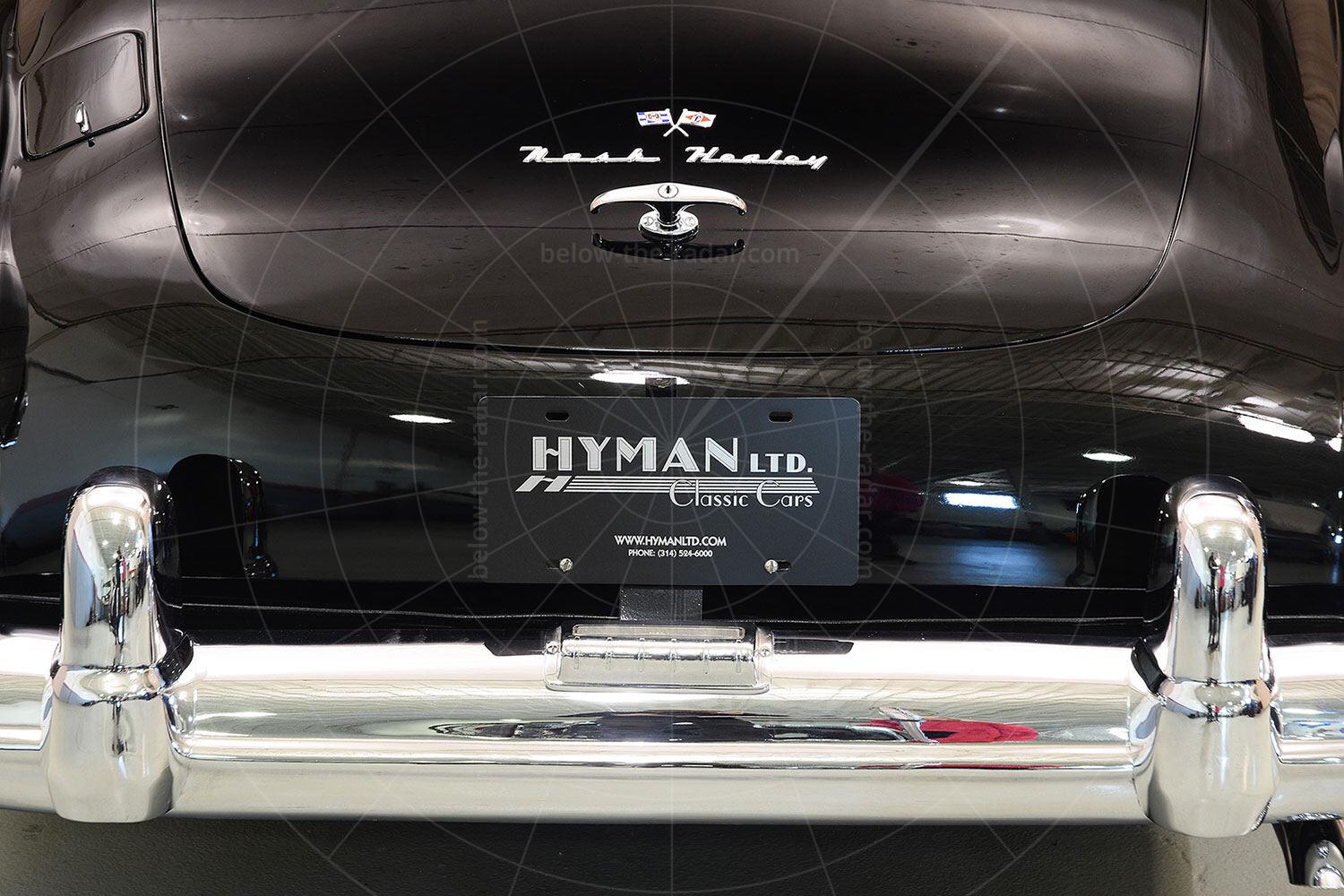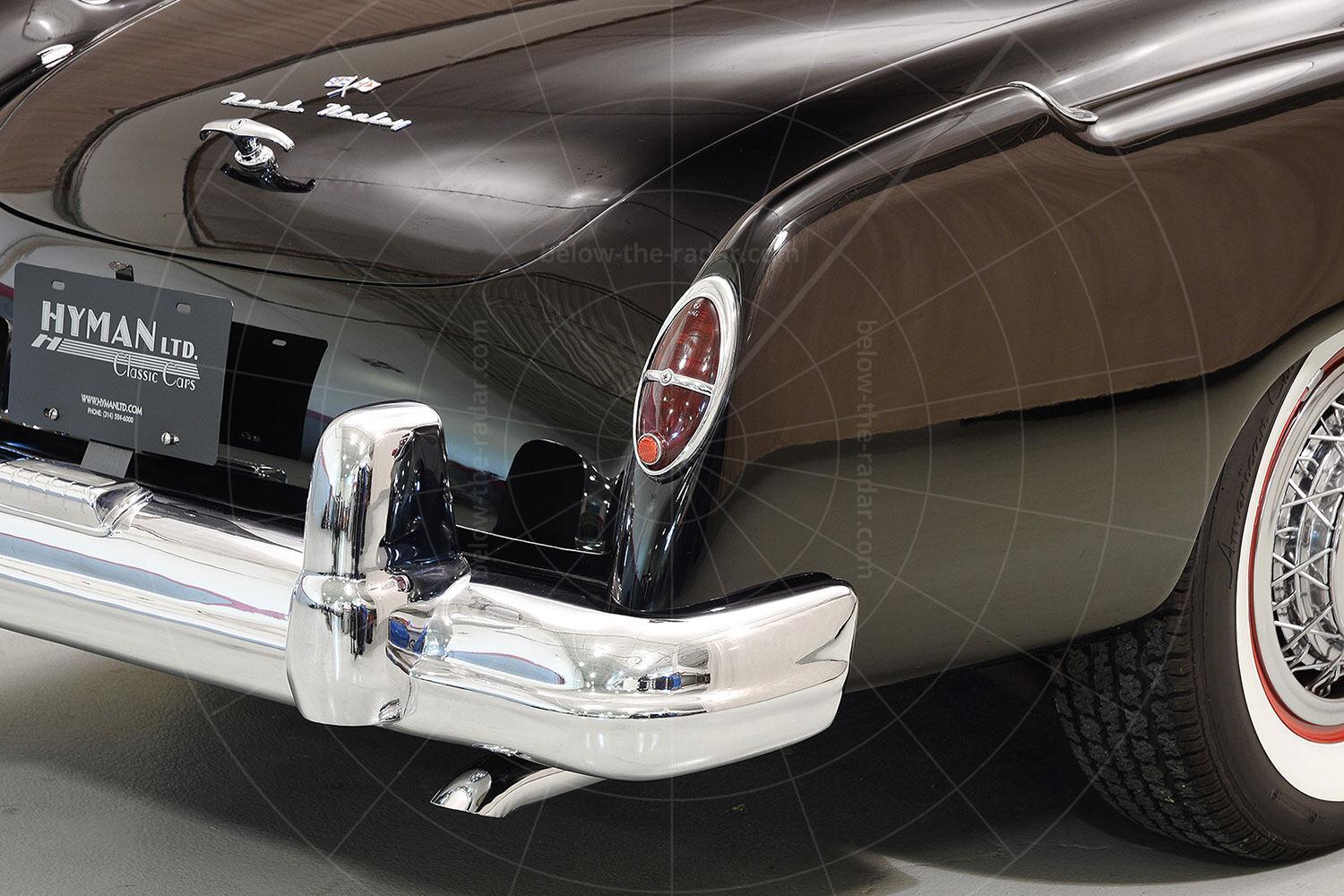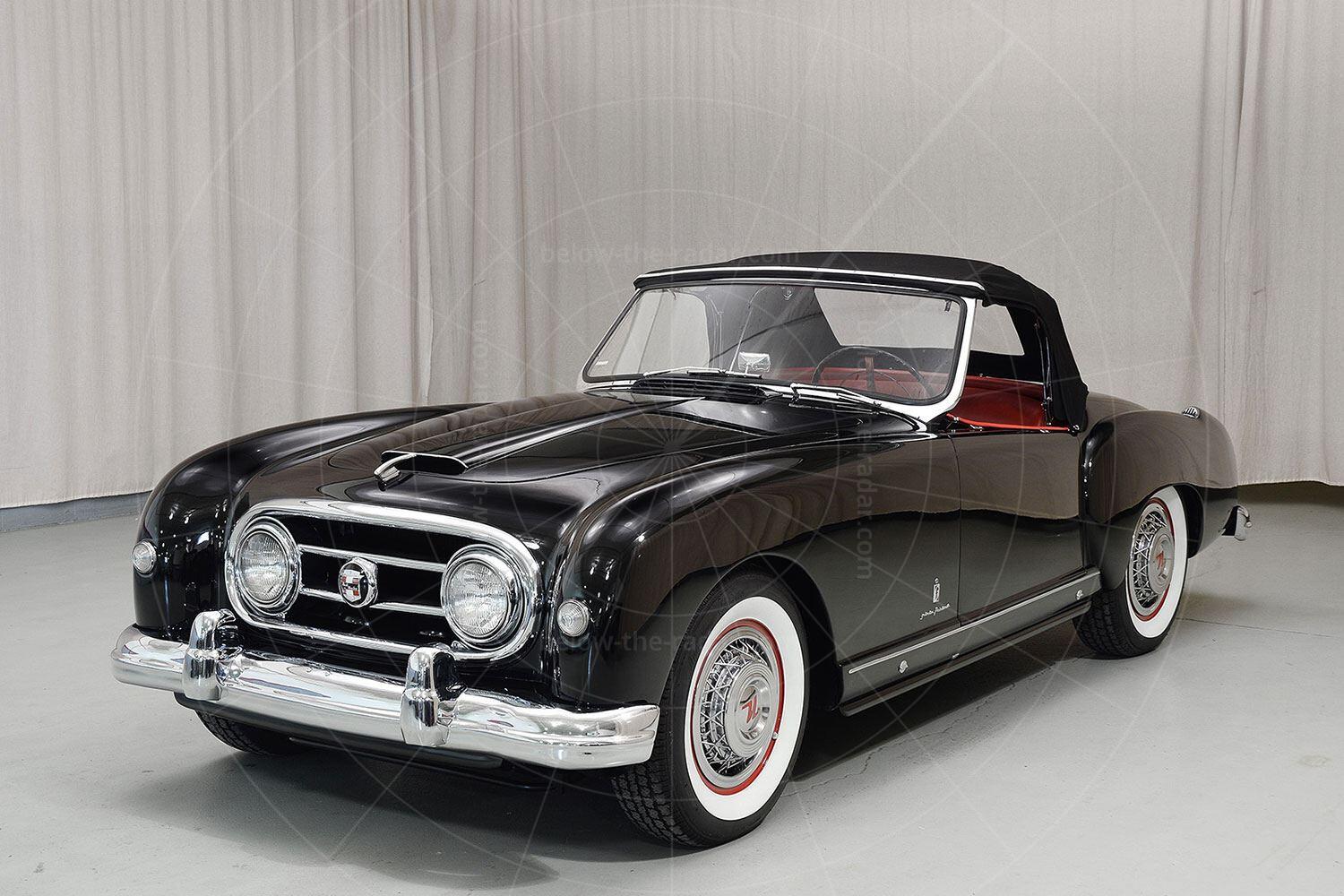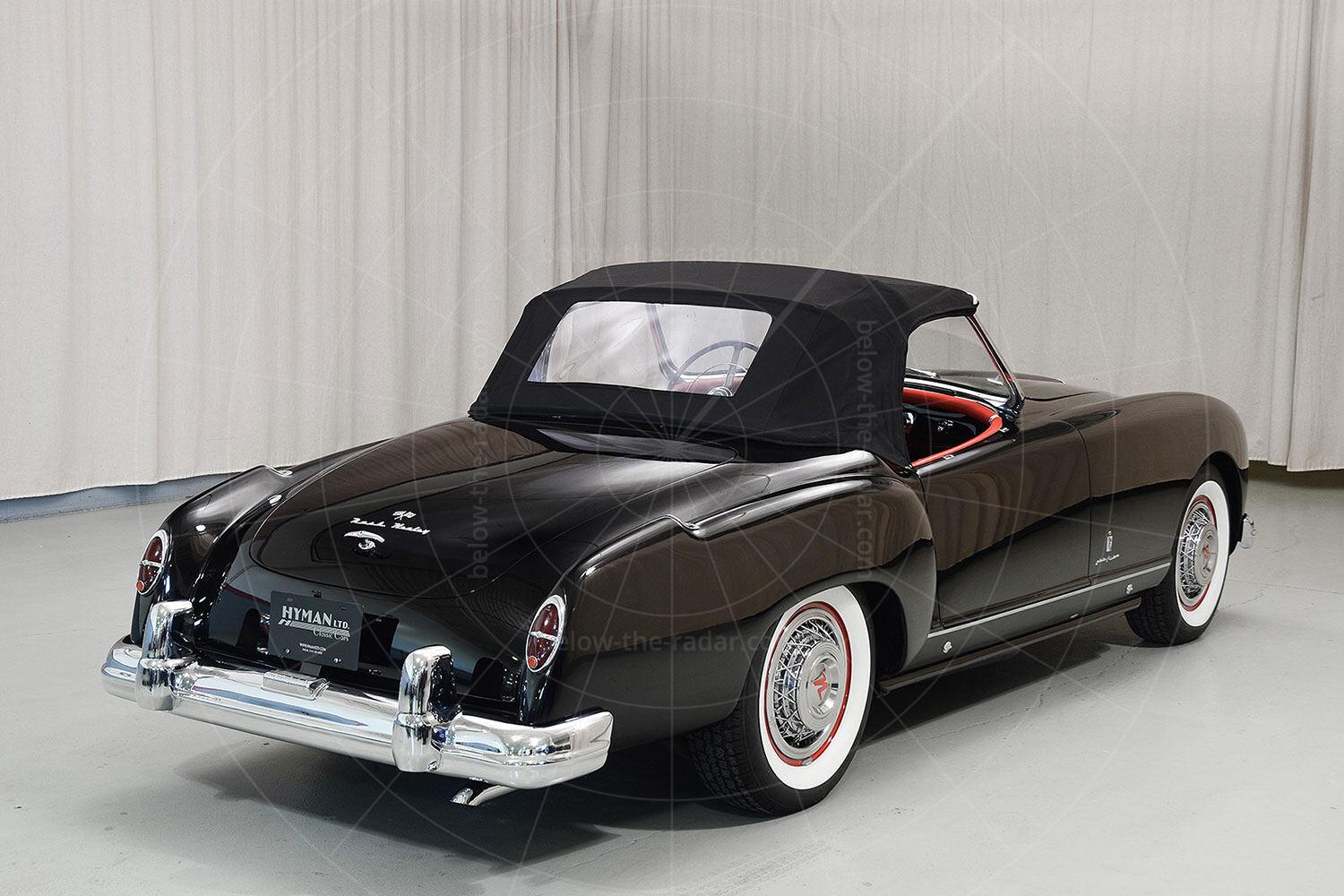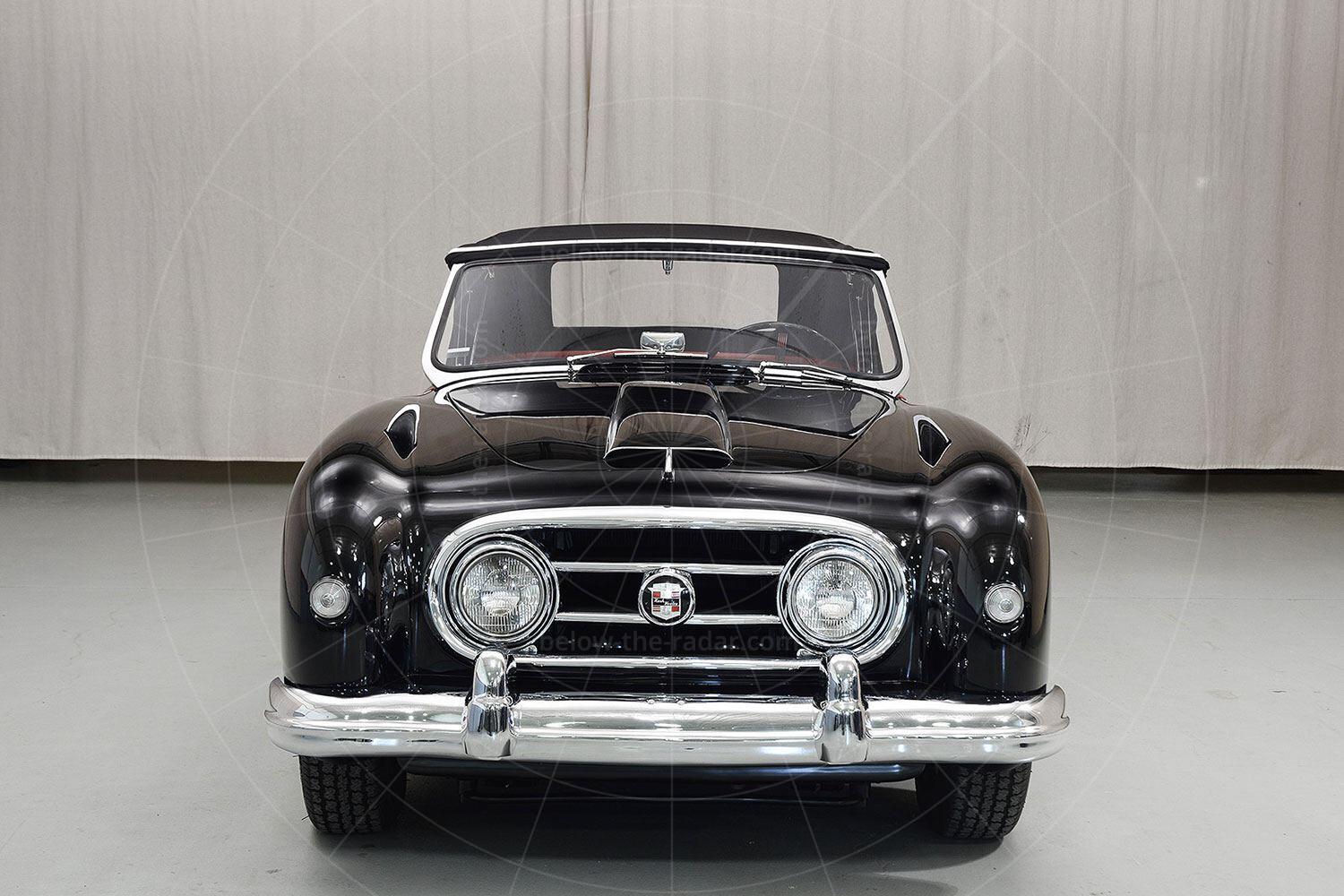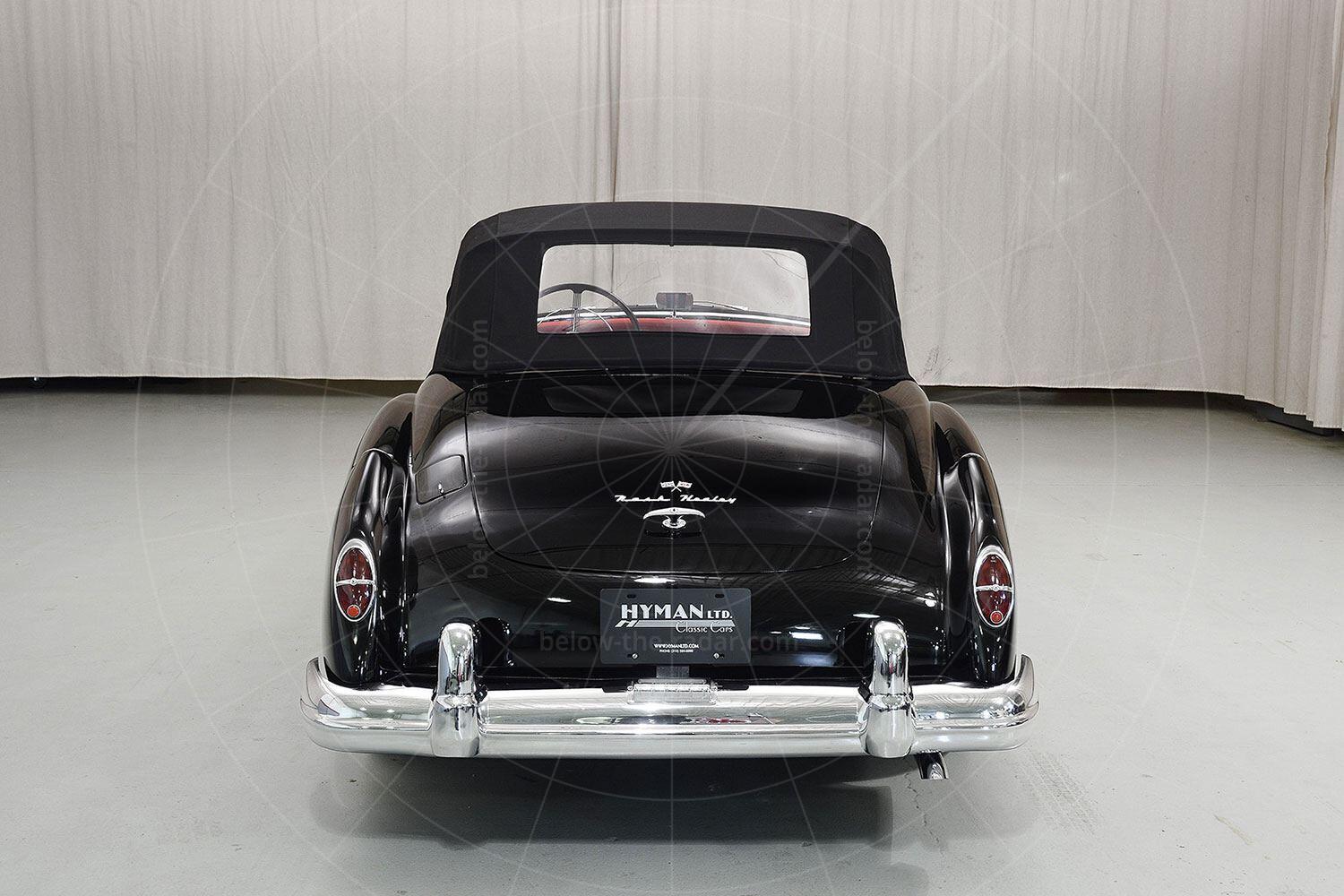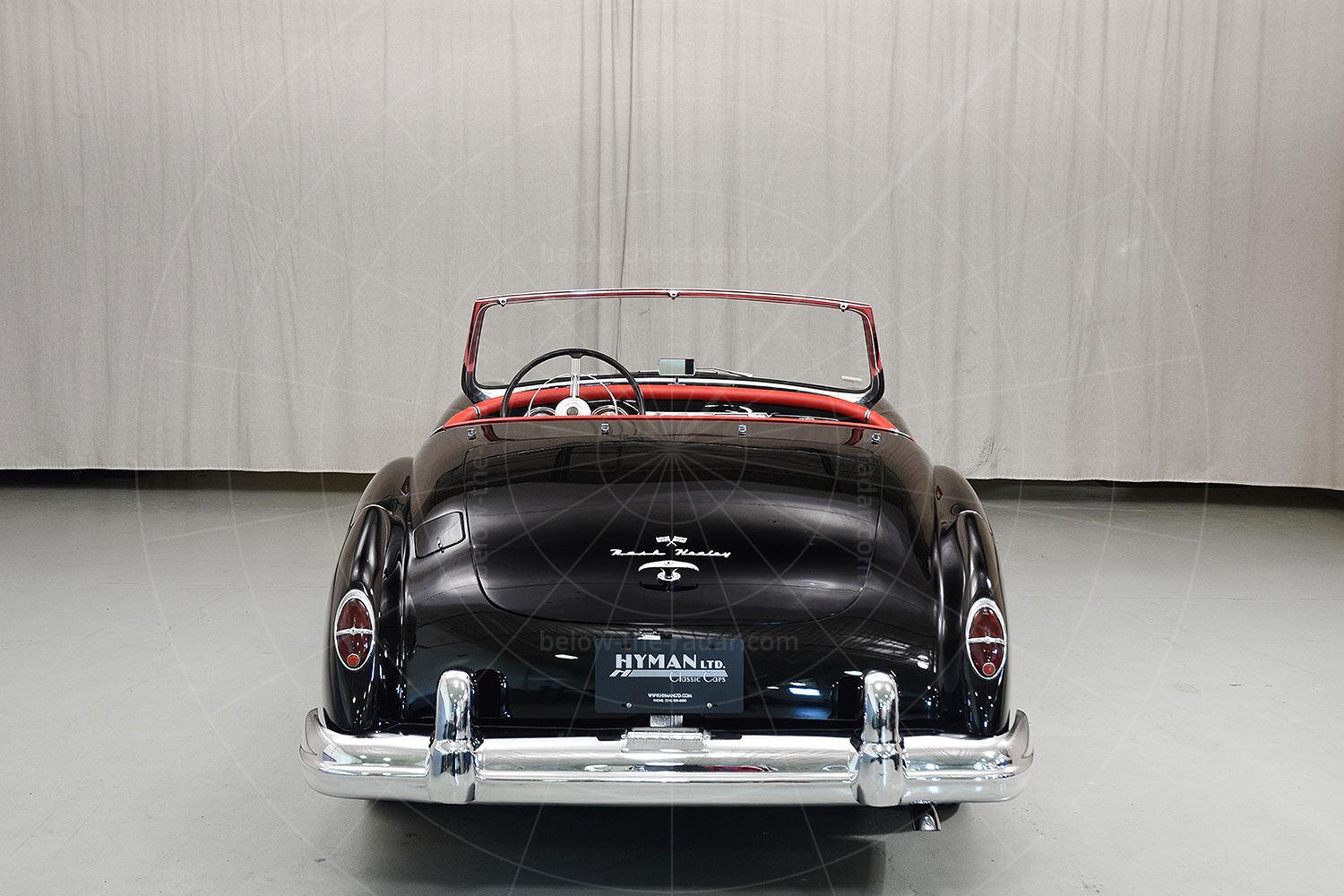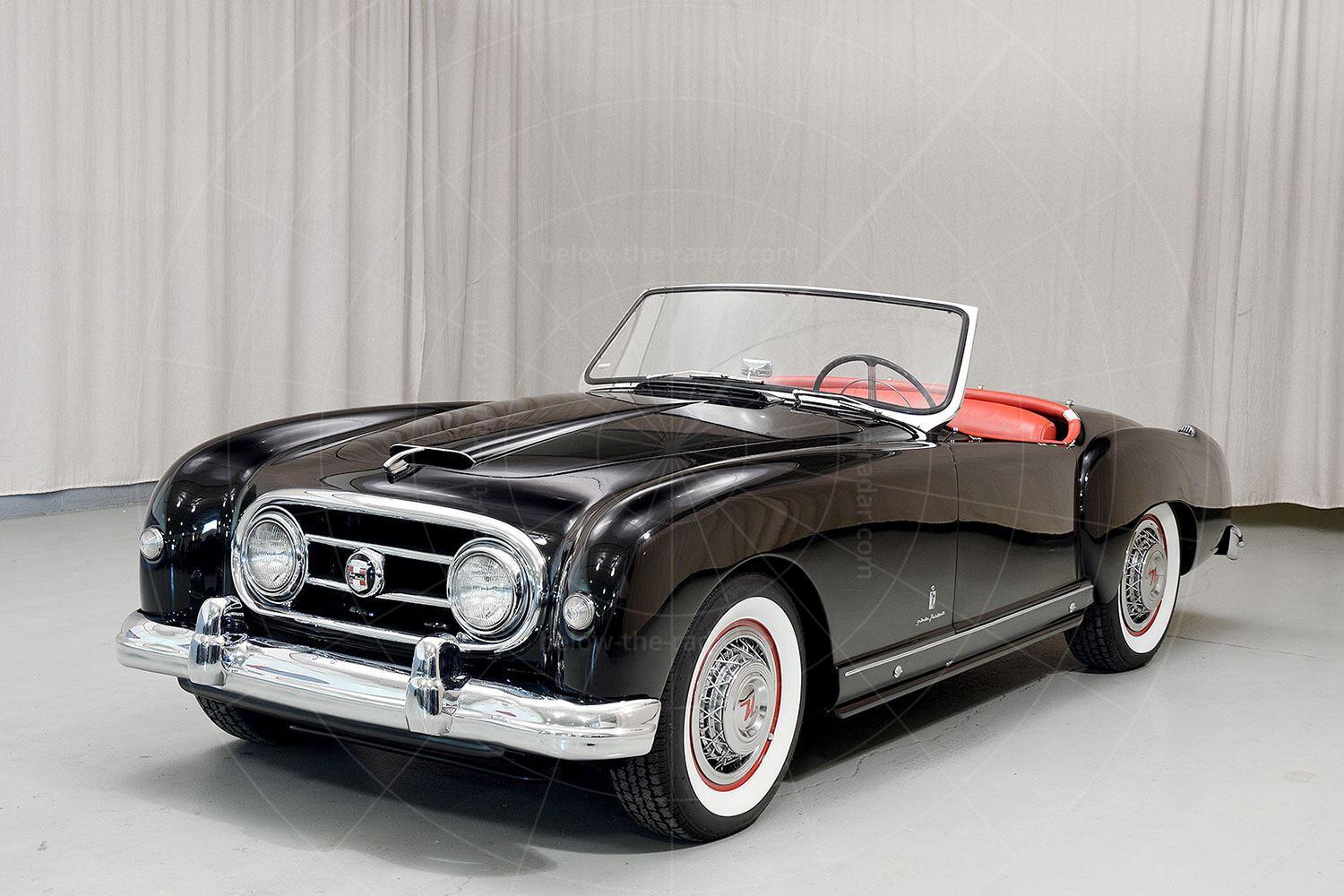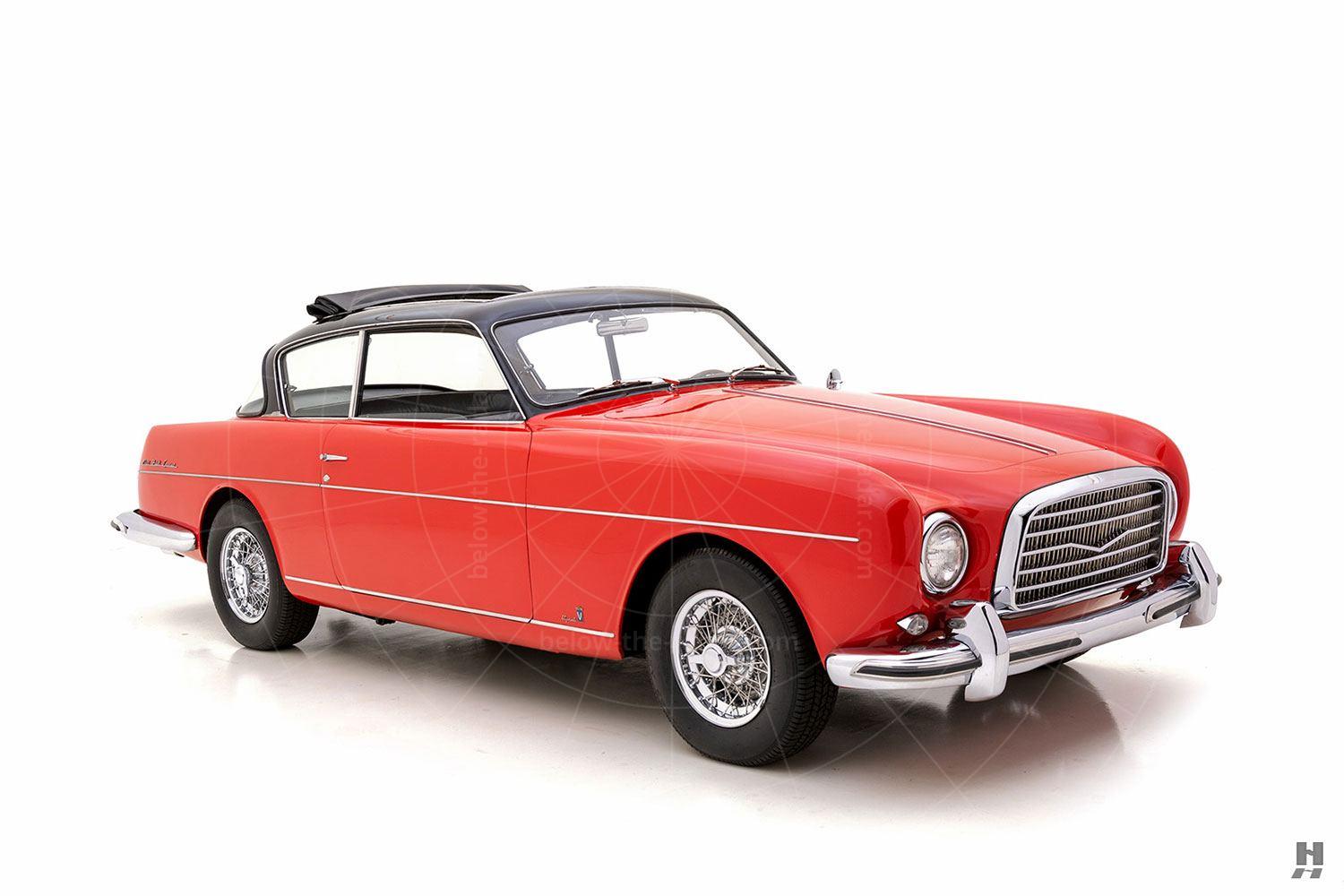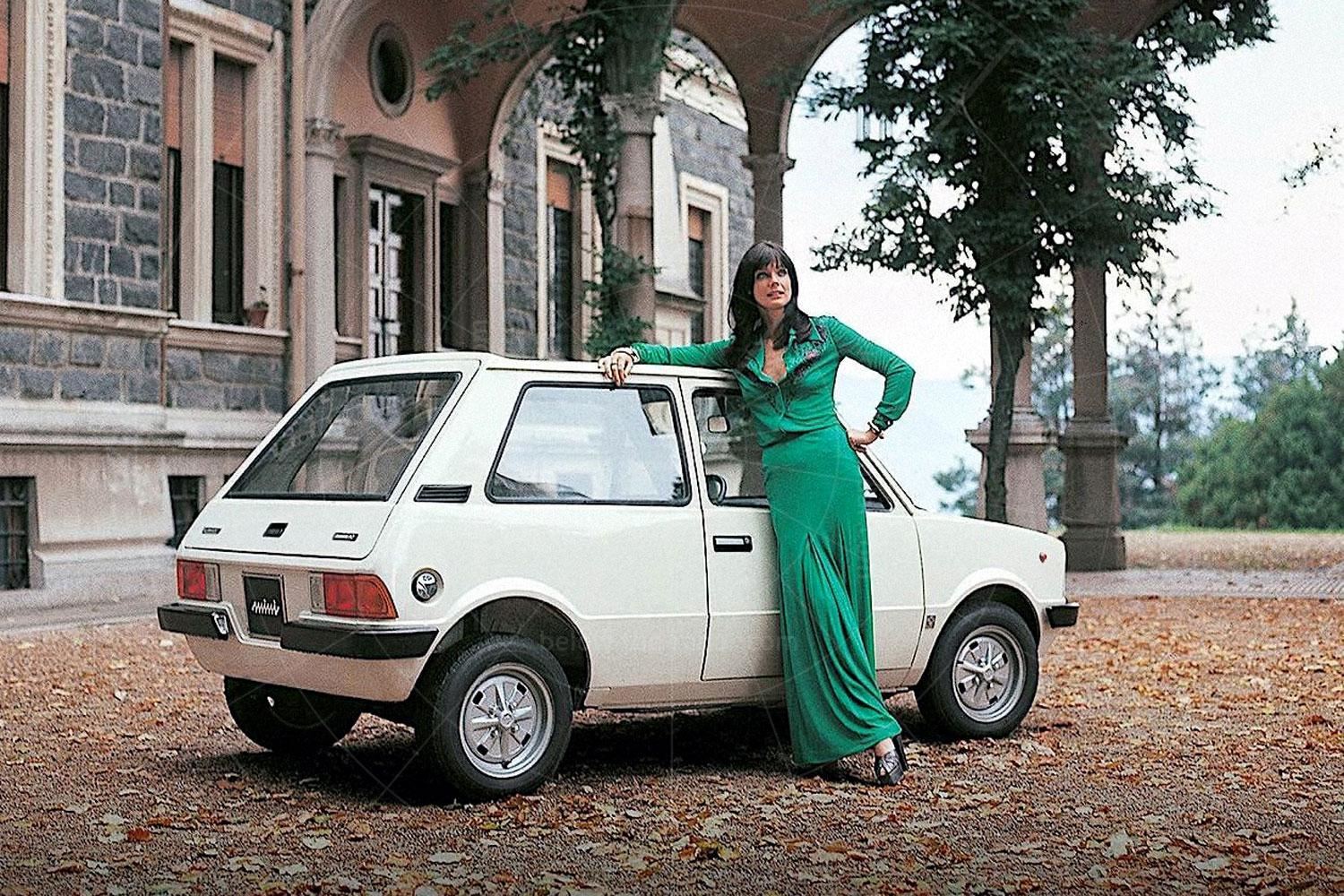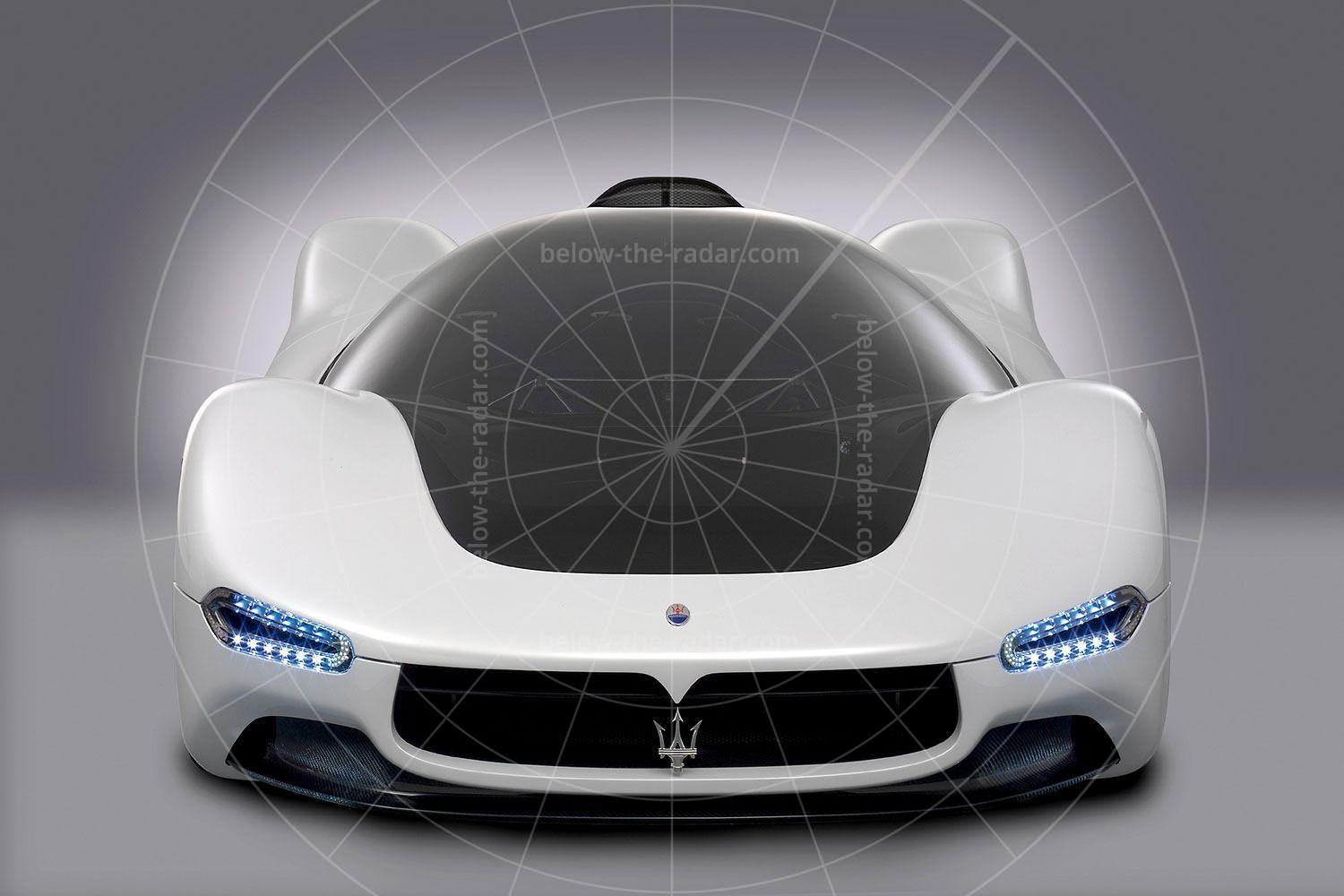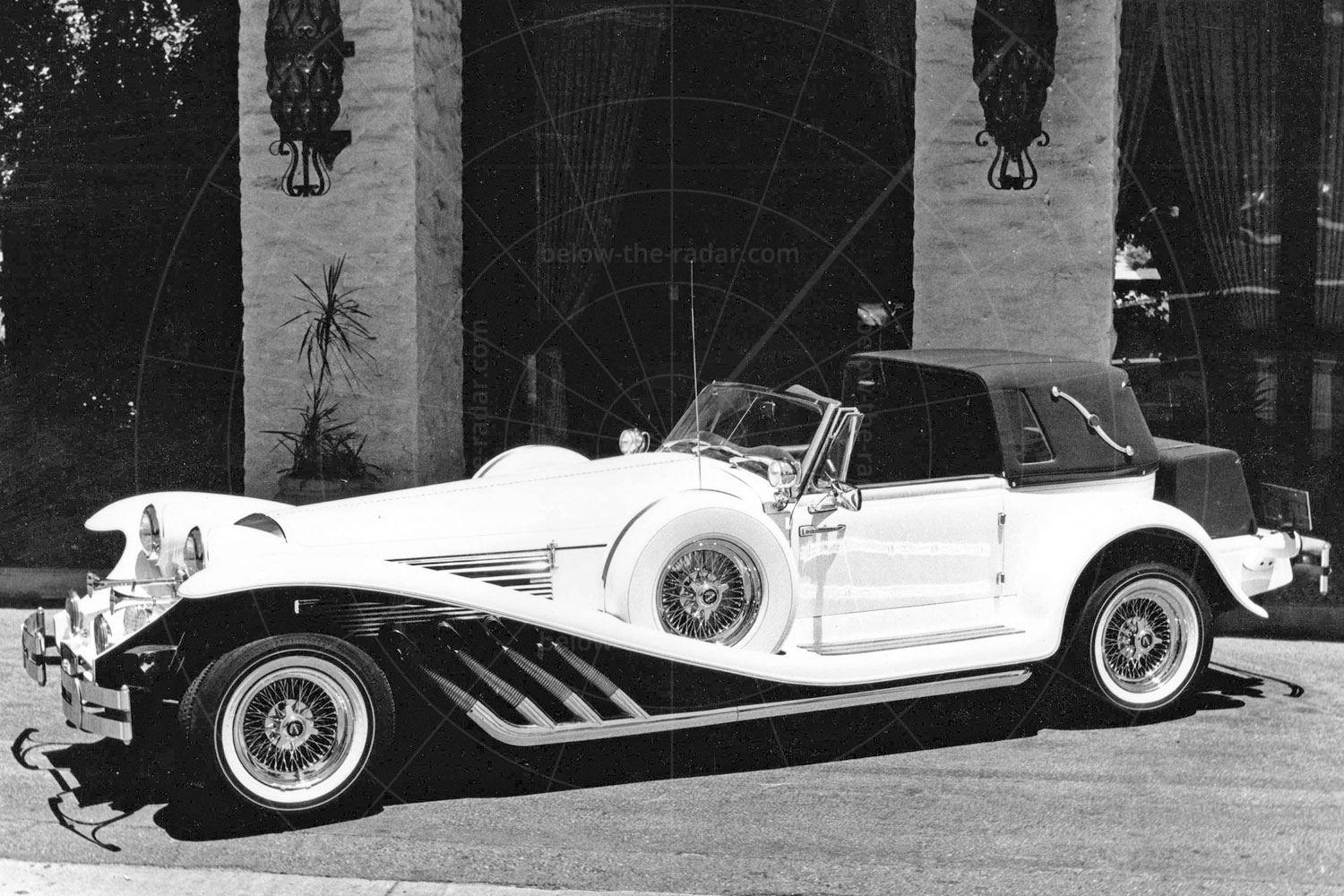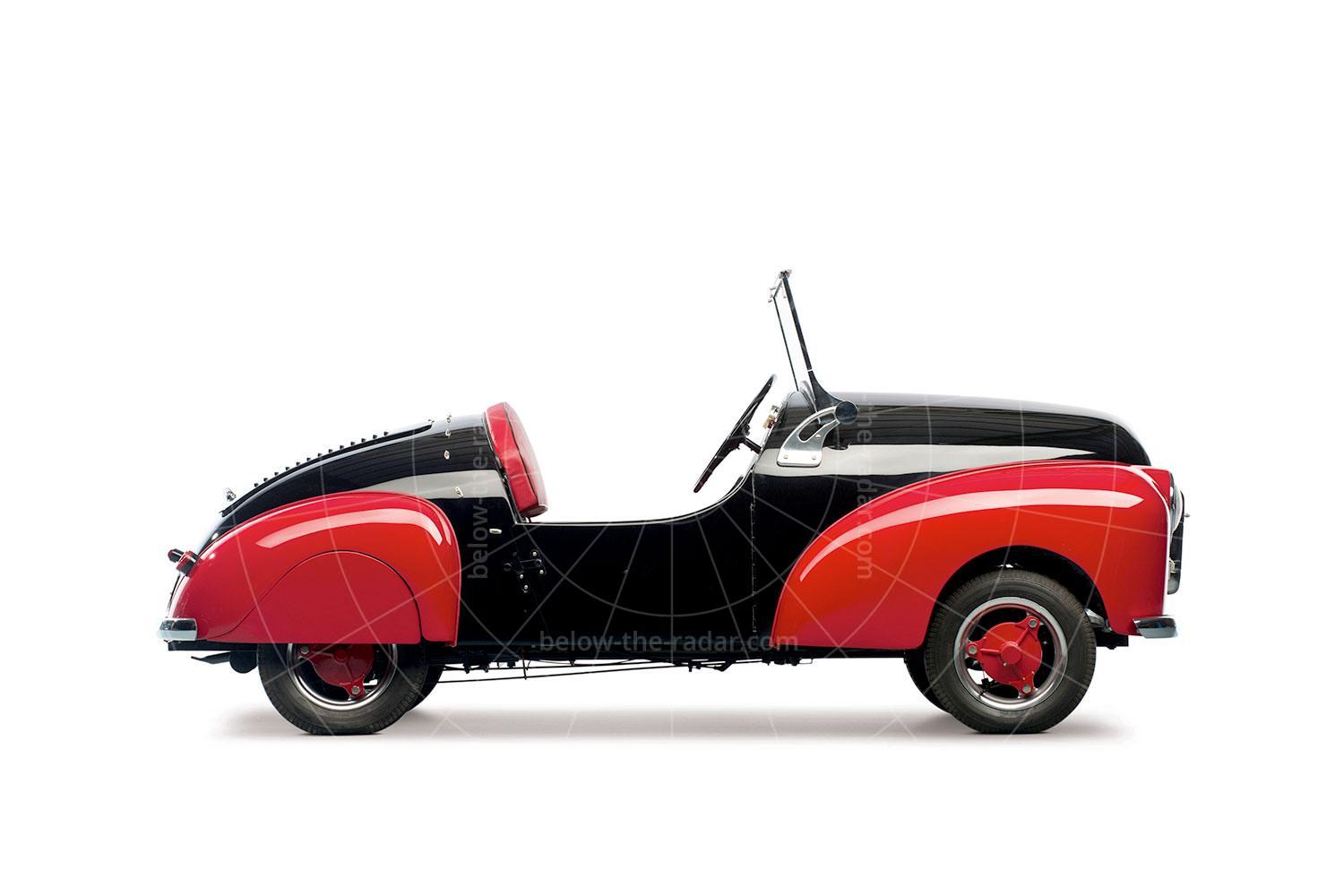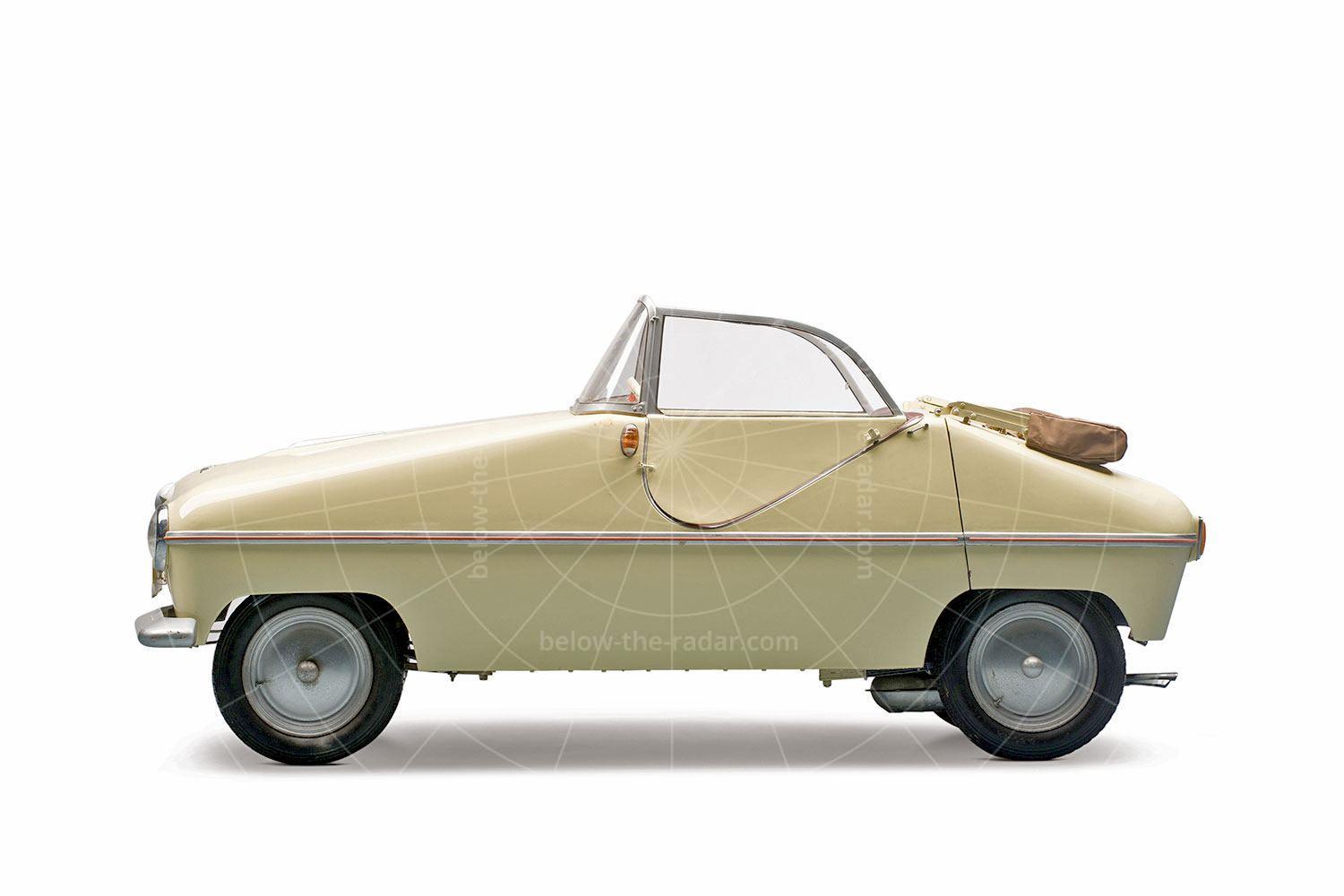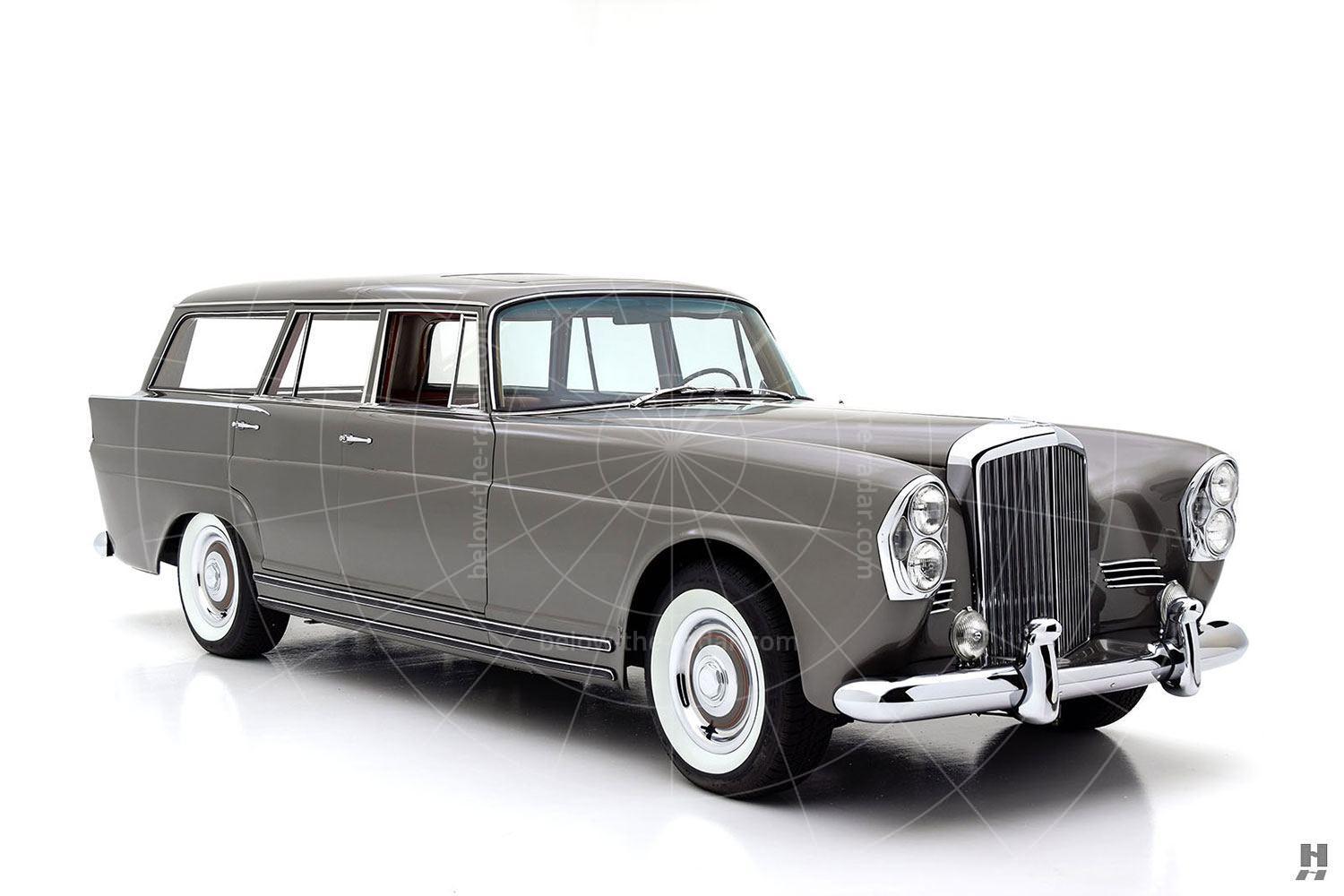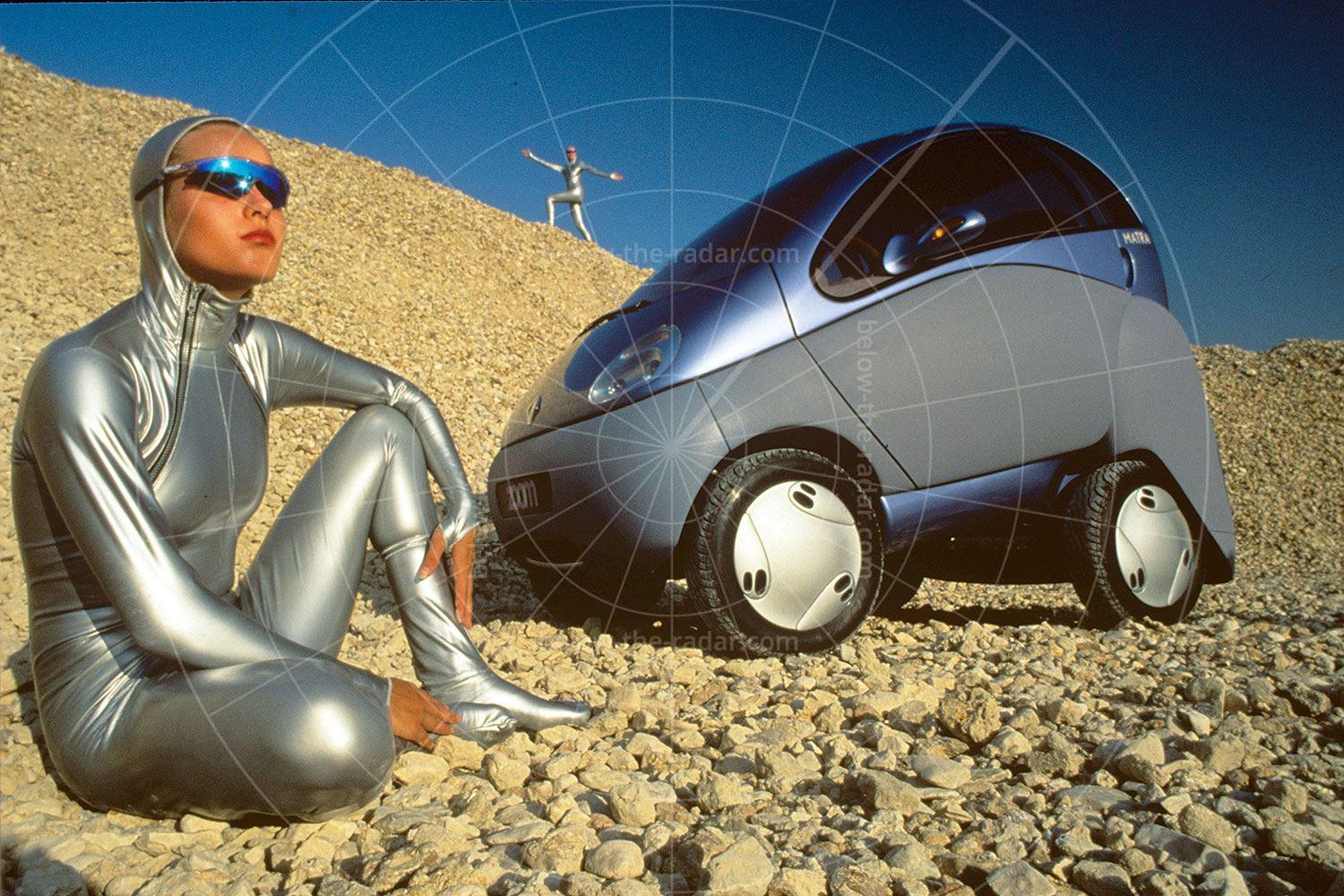In 1951 Nash introduced America’s first sports car since the 1920s. This stylish little roadster was the result of an unlikely chance meeting of two men at opposite extremes of the automotive industry. At the end of 1949, while aboard the England-bound Queen Elizabeth, the rather conservative Nash-Kelvinator president George Mason met British sports car builder Donald Healey, and they hit it off thanks to their shared love of photography.
Healey was fresh from an unsuccessful meeting with GM, where he was attempting to procure a run of Cadillac V8 engines to drop into the Healey Silverstone sports car, but Cadillac didn't have the production capacity to help. George Mason wanted a halo car to lift the rather stodgy Nash line-up, so a deal was made to supply modified Nash Ambassador six-cylinder engines, transmissions and axles to the Donald Healey Motor Company in England, and the Nash-Healey was born. It was exactly what Healey needed; with his company £50,000 in debt, it was in imminent danger of going to the wall.
Nash would send over high-compression six-cylinder engines half a dozen at a time, and Healey would slot them into the modified Healey Silverstone box-section chassis, once they'd fitted a pair of SU carburettors. Nash also provided the propshaft, torque tube, rear axle, heater, wheels and some other bits of interior trim, while it was up to Healey to provide the aluminium bodyshell, which was designed by Gerry Coker, who would also style the Healey 100 that would become the Austin Healey. Without suitable in-house production facilities, bodyshell manufacturing was outsourced to Birmingham-based Panelcraft Sheet Metal.
By September 1950 a prototype Nash-Healey was on show at the Paris Salon, with the car making its official debut in February 1951 at the Chicago Auto Show. At that point Nash was claiming that its new Roadster was capable of 125mph, which was somewhat optimistic for a 125bhp car that weighed 2600lb (1180kg). It transpired that 105mph was more realistic, although with a hotter engine, the windscreen removed and aerodynamic undertrays fitted, 125mph might have just about been possible. Motor Trend was first behind the wheel, in September 1951, with Dick van Osten reporting:
I like the Nash-Healey! Nash Motors has a potential success on its hands after a few more bugs have been worked out. At present, teething troubles are very much in evidence. The original radiator did not cool the engine properly and is being replaced with a larger-capacity core. Trouble has also been experienced with gear ratios, not in the transmission, but trying to find an all-round rear-end gearing. Many other details have provided problems for the combined engineering staffs of Nash and Healey. All in all, it is somewhat surprising that the two firms have not encountered more difficulties while trying to coordinate their problems over 3000 miles of land and water.
The problem was that at $4063, the Nash-Healey cost more than the faster, sleeker Jaguar XK120 which also had the cachet of being an import. Healey built 104 examples of the Roadster, all with left-hand drive for the US market, before George Mason intervened with the decision that a restyle was needed to bring the sports car more into line with the rest of Nash's range. Neither Healey nor Mason had been happy with the quality of the Panelcraft-produced bodyshells, so Turin-based Pinin Farina was drafted in to refresh the styling, and the Italian company would also construct the new bodyshells. Out went the split windscreen and conventional lines, replaced by in-board headlights, bulbous front wings and a single-piece curved windscreen.
The opportunity was also taken to update the engine; the 3.8-litre straight-six was superseded by a 4.1-litre unit rated at 140bhp, courtesy of twin Carter carburettors. Despite the switch to a steel bodyshell (aside from an aluminium bonnet, boot lid and doors), Nash claimed that the updated Roadster was lighter, thanks to careful design and re-engineering of its structure.
From this point on, drivetrains were sent from Nash in the USA to Healey in England where they were mated to modified Silverstone chassis, before being sent to Italy for body fitment and final assembly, before being sent back across the Atlantic to their home market. Predictably this was a costly endeavour and the 1953 Nash Healey cost $5908 compared to the Corvette’s $3513.
Predictably, sales were hard to come by, so Nash decided to expand the range by introducing a coupé version of its Roadster. Called the Le Mans after Nash-Healey had enjoyed success at La Sarthe with a one-off lightweight racer, this fixed-head coupé proved a little easier to sell than its open-topped sibling, which is why the Roadster was dropped in 1954 – production of the Nash-Healey ended altogether in August of that year. Just three months earlier Nash Motors had merged with the Hudson Motor Company to form American Motors Corporation, which had limited marketing and promotional resources, so it had to focus on its biggest-selling models.
When Road & Track reviewed a Roadster in June 1954 (just as the final cars were coming off the production line), the magazine was clearly frustrated by Nash-Healey's asking prices; it officially charged $6000, yet discounts of $1200 were readily available. Despite this, Road & Track rather liked the Roadster, proclaiming:
The Nash-Healey is one of those few sports cars which is effortless to drive. it rides well, handles without trace of vice or viciousness. The three-speed transmission, with overdrive, has a well-placed, easy-to-control lever that contributes to the general fun character of this machine.
In traffic the Roadster gives the driver considerable confidence. In low gear the car takes off with a quiet but tremendous rush. Out on the open road the Nash-Healey cruises at any speed desired, the very high overdrive ratio of 2.87 giving modest revolutions for the seven main bearing engine. Maximum speed falls off noticeably with the top down, but there is no great difficulty in shaking off 200 plus horsepower behemoths.
The steering is exactly right at 3 ¼ turns lock to lock, and directional stability at 100mph is excellent with no tendency to wander. There is a definite understeer and somewhat more roll than might be expected of a sports car, but ride quality rates very high on this car, the only criticism which might be made is a sensitivity to expansion joints on a concrete road which produced a more noticeable thump at each impact than is usual.
The quality of the Italian-made body is almost beyond reproach. The doors rack slightly on rough roads, but this seems to be characteristic of all open sports cars and there were no rattles. Plating on the windshield showed signs of early deterioration, but the rest of the body – paint, leather, trim etc were equal to the custom-built cars of twice the price.
- The car pictured is a 1954 Nash-Healey Roadster from the final full year of production and is one of the 314 Pininfarina-built roadsters. It was sold by Hyman Ltd; many thanks to the company for the use of its pictures to illustrate this article.
| Vital statistics | |
|---|---|
| Produced | 1951-1954 |
| Number built | 507 (incl 90 coupés) |
| Engine | Front-mounted, 4140cc, 6-cylinder |
| Transmission | 3-speed manual, rear-wheel drive |
| Power | 140bhp at 4000rpm |
| Torque | 230lb ft at 2000rpm |
| Top speed | 105mph |
| 0-60mph | 11.5 seconds |
| Price | $5908 (1954) |

